|
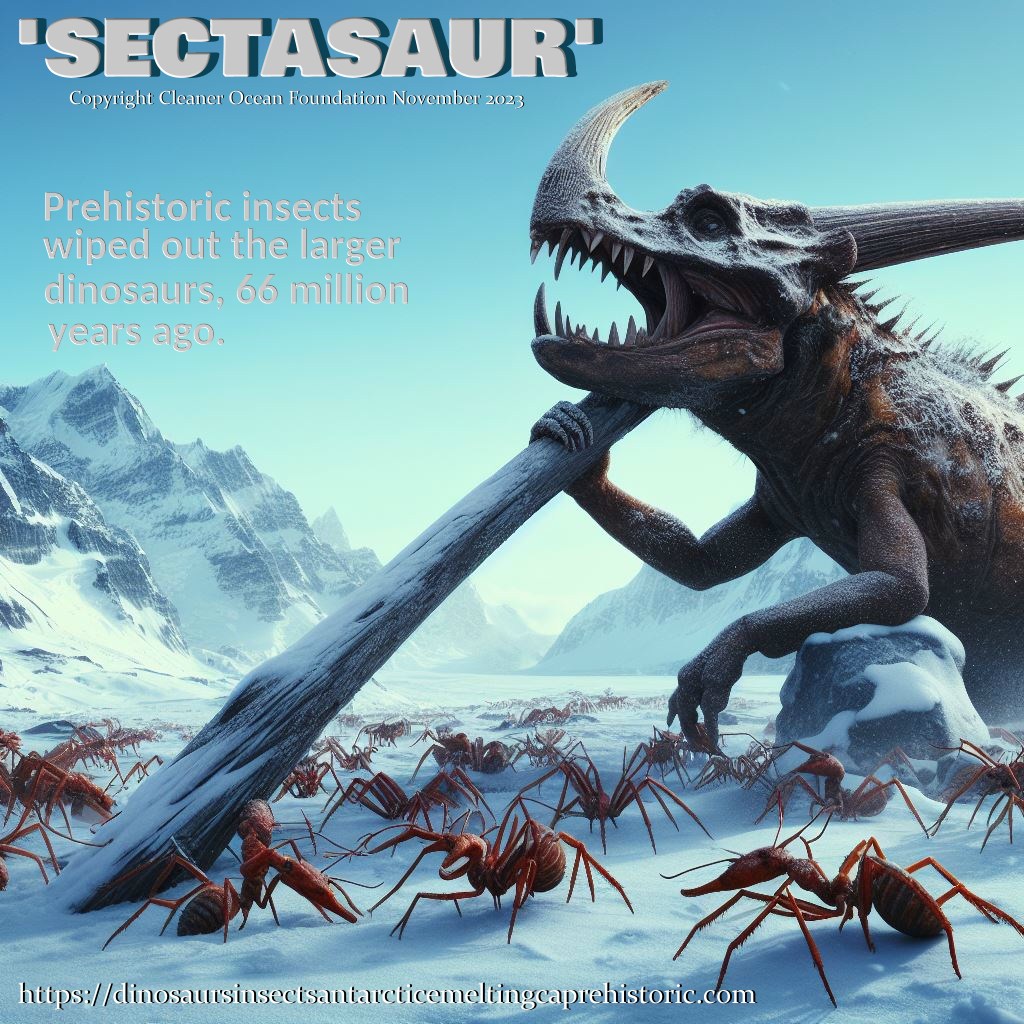
The
question as to what killed the dinosaurs is still a hot topic for
debate. What if there was a build up of events in ordinary evolutionary
cycle, where it paid to be resistant to extreme cold.
John
Storm, the rugged ocean
adventurer is also an amateur Paleo
Anthropologist, near obsessed with his DNA
collection called 'The
Ark,' that is safely embedded in his trusty ship, the Elizabeth
Swann, protected by the ever
watchful Hal.
Having
been injected with a super CRISPR
virus, John
became DNA enhanced like the Panamanian
Running Man. Allied to his new strength, the CyberCore
Genetica™, and a brain implant named BioCore™, the combination turns him
into the most digitally connected person in history. A walking library
of information, with AI processing capability.
Despite
all good intentions during UN conferences and the like, global world leaders
had failed to address climate change
in sufficient time to prevent the oceans from boiling. As a result, the
ice caps at the North and South Poles melt, revealing Antarctica as
never seen by man, in a semi-prehistoric state.
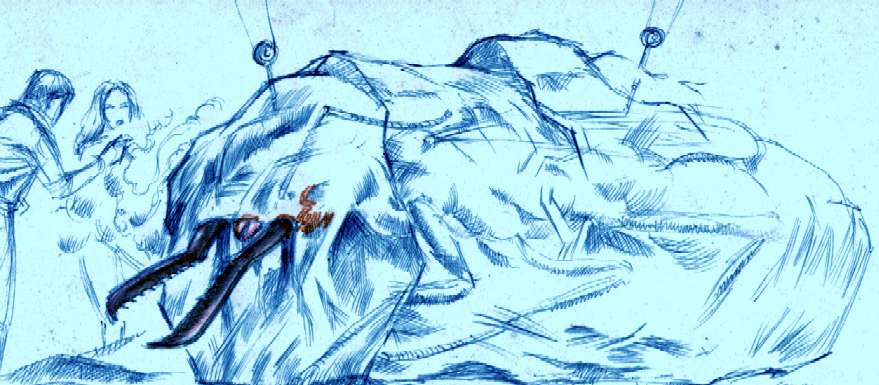
A
startling discovery in the ice, sharp jaws protruding from a block of
solid ice.
SECTASAUR™
PLOT SUMMARY
At a time in the not too distant future, the ice melts at both poles revealing features on the land not seen for
thousands of years. A converted Frigate, the US Arktos is discovered at the South Pole locked into melting
ice, then freed. She has been missing since an expedition in 1838. A famous ship at the time, formerly the USS Essex, she had been bought at auction in 1837 and hastily refitted by a group of explorers who had come by a fossilized artifact thought to be of considerable archaeological importance. The fossilized jaw was said to have originated in
Antarctica brought back as a souvenir by the Russian explorer Fabian Gottlieb von Bellinghausen during his fabled 1820 expedition.
Another fantastic discovery is a labyrinth of tunnels beneath the ice, dated by scientists to be millions of years old. Mysteriously, the scientist who discovered and dated the tunnel complex disappears, but not before his find is leaked to a Sky news researcher on the Discovery channel.
Alerting Charley Temple to the unfolding story. And yes, she rises to
the occasion, sending alerts to her fellow adventurer, John Strom.
The Antarctic is inhabited by survey expeditions from up to six counties at any one time. Though the country is not the sovereign territory of any one nation. But, by agreeing a series of treaties, an understanding is in place and this wilderness is amply protected as a result.
Three new expeditions are launched by competing concerns, the first a Swedish venture lead by a headstrong Bjorn Atlas and his navigator Sven Johansson. The second expedition is a multinational effort lead by Cathy Carter with 3 veteran arctic explorers. The third expedition is a private enterprise secretly funded by Chinese Triads, under the leadership of Lin Po Chang, a child genius and infamous martial arts champion and his two dedicated henchmen.
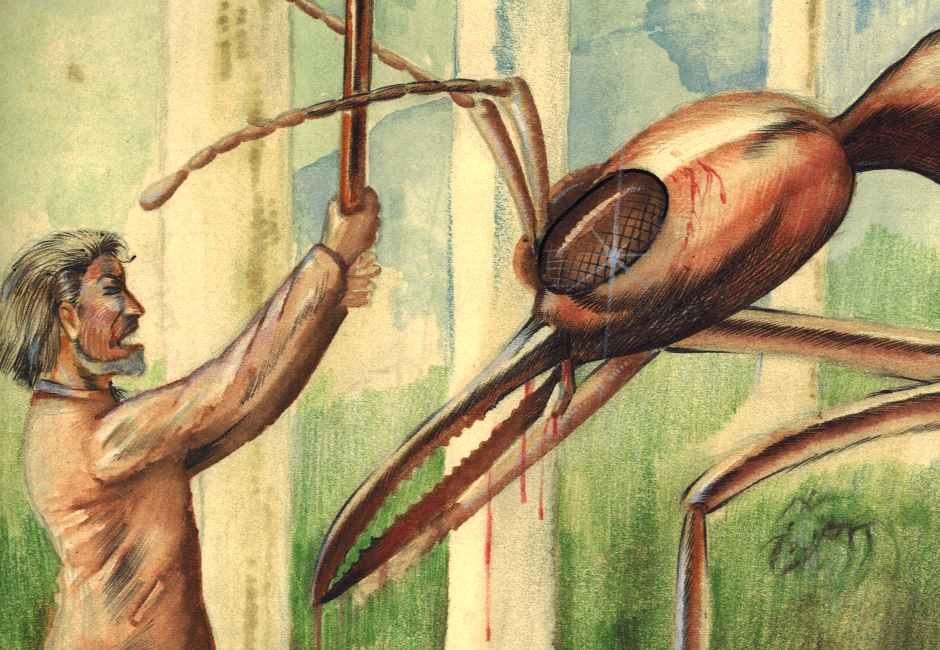
Taken
by surprise, and a knee jerk reaction, John goes to attack the Sectasaur,
before realising they have a rapport.
A race ensues where the teams vie with each other, to secure the archaeological prize that is there for the taking. Lin Po Chang, is not only a master of the martial arts (Taekwondo & Karate) but also a keen paleontologist, who predicted the existence of variant life-forms on this continent and has more than a hunch as to the inhabitants of this tunnel complex.
Several fatal accidents occur in quick succession, then an egg clutch is discovered in a section of a tunnel. For a moment all rivalry is dispatched as the parties marvel at the find. They assume the eggs are prehistoric and dinosaur remains, though the eggs have a tough leathery
exterior (Alien - Ridley Scott), rather than a hard shell.
Systematically, Chang eliminates the remaining opposition, pitting the Swedes against Carters
crew (Ice
Station Zebra - Alistair Mclean), until only one man and one woman remain alive to challenge Chang: Sven Johansen and Cathy Carter. In a desperate act of self sacrifice, Johansen tackles Chang while Carter escapes, seriously wounded to reveal the tragic turn of events to her Sky colleague, the self same Discovery channel researcher - she dies shortly after.
Meantime, Chang deploys his talent to nurture one egg through a simulated incubation when a creature not seen on Earth during Man's evolution is brought back into an unsuspecting world.
The creature is smuggled aboard an ageing Ice Patrol survey vessel called the 'KoolArctic' bound for England, in a crate marked rock
samples (Relic & Arachnophobia), whereupon it burrows out and grows rapidly, eating two crew members of the survey vessel who discovered, then tried to kill it. Chang had already relocated the remaining eggs, before setting out to rendezvous with his precious cargo in Portsmouth, unaware of the developments onboard
KoolArctic.
The second mate on the KoolArctic reports the chaos aboard their vessel to the British Admiralty, shortly after being forced to abandon ship with the remainder of the crew, on the advice of his superiors to scupper the ship. The ship sinks but the resourceful creature manages to cling to flotsam then hitch a ride on a container ship the 'Atlantic Express' under the cover of darkness.
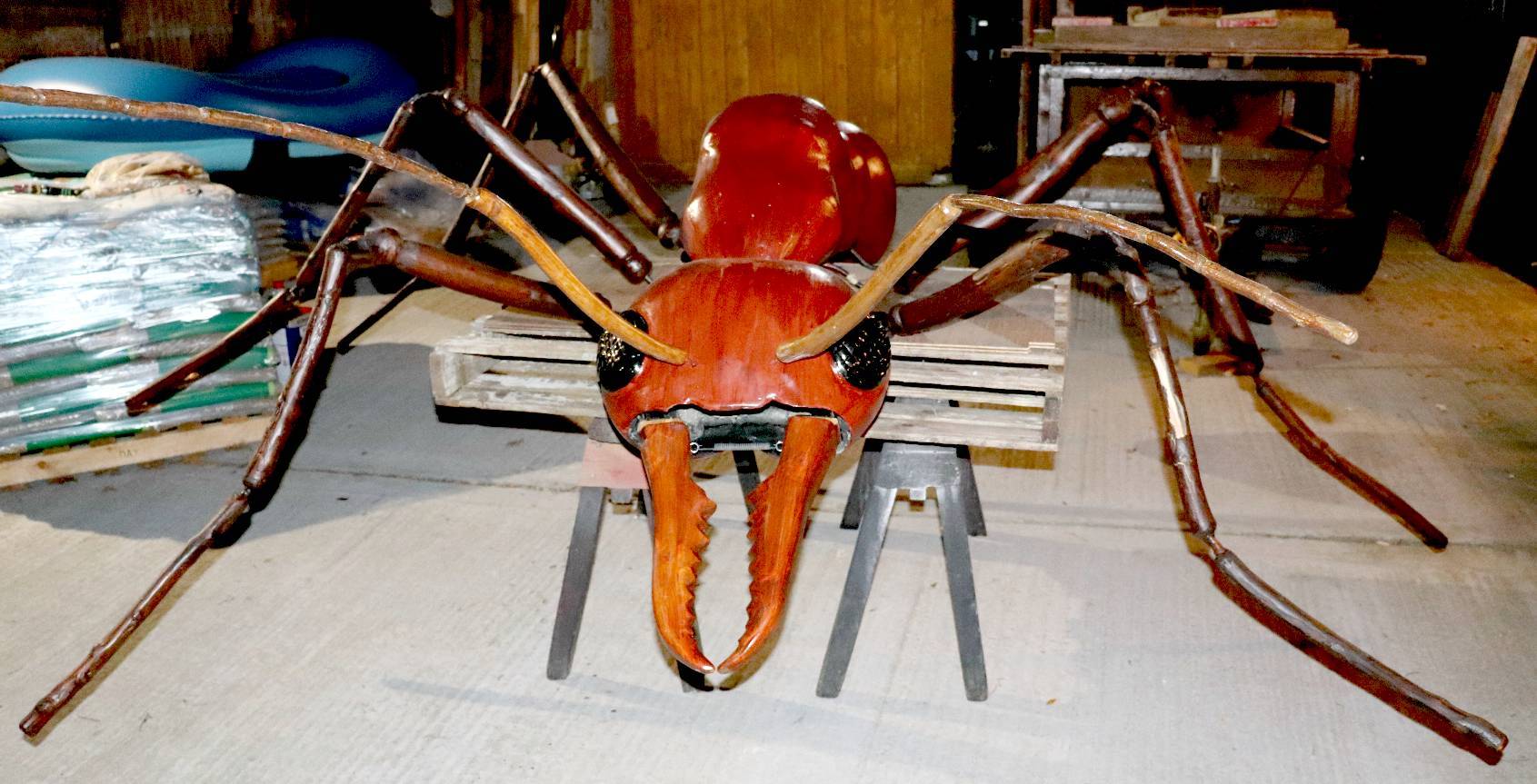
The
artwork is also suitable for use in "Jimmy Watson's Magic Dinobot."
A proposed network TV serialization, about boy who saves his paper round
money to buy himself a robot for Christmas. Then, when assembled, it
come to life, to become his friend.
MI6 and the
CIA decide to send in
John
Storm, an expert diver, archaeologist and enthusiastic adventurer to report on the goings
on, in return for a generous contribution to his causes. Storm is happy to oblige if it means adding to his DNA collection for his usual fee - a hefty donation to his favourite charities. Having equipped his solar
and hydrogen powered ship, the Elizabeth Swan, with arctic clothing and supplies, he,
Dan Hawk and Charley Temple sped from the
Southern Ocean to the Weddell Sea and there to Deception Island, an extinct volcano.
The team set up camp onshore and soon the trio locate the excavation site, then using the 'Ark' (a DNA database) Storm uncovers disturbing new evidence to support a theory that dinosaurs were not wiped out by a meteor striking the earth (creating an artificial ice age), but by very efficient hunting animals related to the Vespoidea or Myrmecia Giganticus taxonomic group, part of a long extinct branch of the family Formicidae of the order Hymenoptera - insects in plain speak. This strain appears to have evolved rapidly by adaptive radiation. From the evidence on site it seems that these deadly animals hunted in packs in significant numbers to overwhelm much larger animals (an example of which may be seen in 6mm army ants overcoming a 40mm bull ant and just about any animal in the jungle that gets in their way).
They
lived at a time when dinosaurs ruled the earth. Maybe, partly explaining
the demise of the smaller prehistoric creatures, such as Velociraptor.
Where Tyrannosaurus Rex would have starved in a volcanic winter, smaller
animals might have fared better. Except against creatures with a higher
tolerance to freezing conditions, and even faster reaction times.
From DNA analysis aboard an energy depleted Elizabeth
Swan, Storm estimates that this species grew to between 3-5 metres and that they were warm blooded with a high tolerance to low temperatures, with a kind of lung to supply vast amounts of oxygen to their spiracles via an organ pumped dorsal aorta to the other organs in an otherwise classic exoskeleton arrangement. Storm and Hawk realize the danger if such a creature were ever to be introduced on the mainland and with evidence that eggs have been removed from the site, alert MI6 and the CIA to the danger.
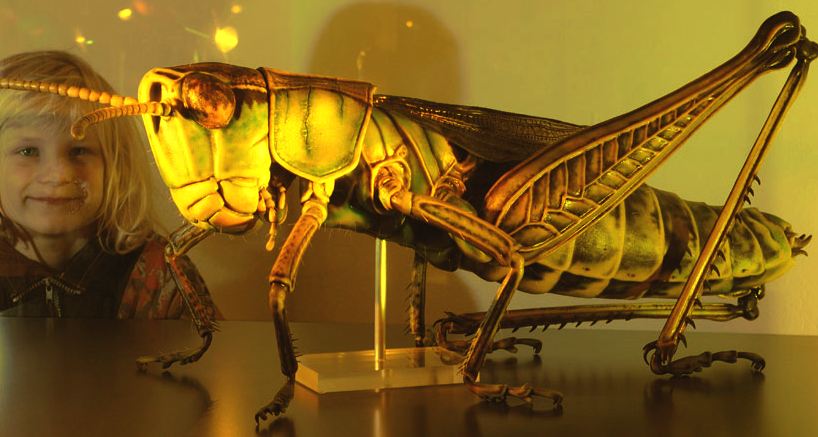
A
giant (extinct) grasshopper - Mueritzeum Museum, Warren, Germany
Storm and crew head to England at high speed. Meanwhile Chang has landed in Portsmouth, to await the remaining eggs unaware that the
koolArctic is at the bottom of the ocean and the Atlantic Express then docks in Southampton to unload her containers.
The giant prehistoric animal jumps ship at night crossing the River Test heading west, finding comfort in the outskirts of the New Forest where it feeds on ponies that are in plentiful supply. Eventually, losses of these equines come to the attention of a nature group and that is passed on to Hampshire police, relayed to MI6 and thence to John Storm.
Storm and crew came into the Solent proceeding up the Beaulieu River to Bucklers Hard. An expedition into the bracken led Storm some miles from one of the pony corpses toward a wooden area near Worts Gutter (Furzey Lane). Storm called MI6 for backup. MI6 rushed to surround the area with heavily armed troops to protect civilians.
John Storm and Charley Temple went in hoping to somehow capture the animal without harming it. They stalked the animal for a time, but the creature had located and been stalking them, following their scent trail - when the giant insect came up from behind over the brow of a ravine and knocked Charley nearly unconscious as she reacted in fright. Storm managed to strike the creature with an axe he had picked up along the way. It fell down lying still in partial shock.
Charley and John marvel at the anatomy of this ancient breed. Ignoring the dangers, they both set about patching the creature's wound with antiseptic and bandages that Charley had brought along in case they got into trouble. The dino ant allowed them to patch her up, ignoring the pain, it lay immobile listening to the couple talking, pretending to be incapacitated. The creature understood that the dialogue between John and Charley is not aggressive or threatening, but rather caring - and marks these two humans down as allies.
The insectoid feigned recovery, when John panicked and again went for the axe. Also as a reflex action the dino ant lashed out at John, throwing him backwards over a ledge, and Charley sprawling through some undergrowth. He managed to grab hold of a few roots - he was now at the mercy of the creature.
The huge insect rushed in for what John thinks is the kill, but instead puts itself at risk on the ledge to pull John up to safety. Meanwhile government troops are closing in and have seen what looks to them like a struggle, so increase their pace determined to kill the creature.
John dusted himself off while the magnificent insect squatted adjacent, also cleaning itself. Puzzled at the turn of events, he spoke to the animal - and the creature responded, turning its head to look at John - as if trying to understand. The giant insect regarded John's voice as a friendly sign and had logged his and Charley's scent as such.
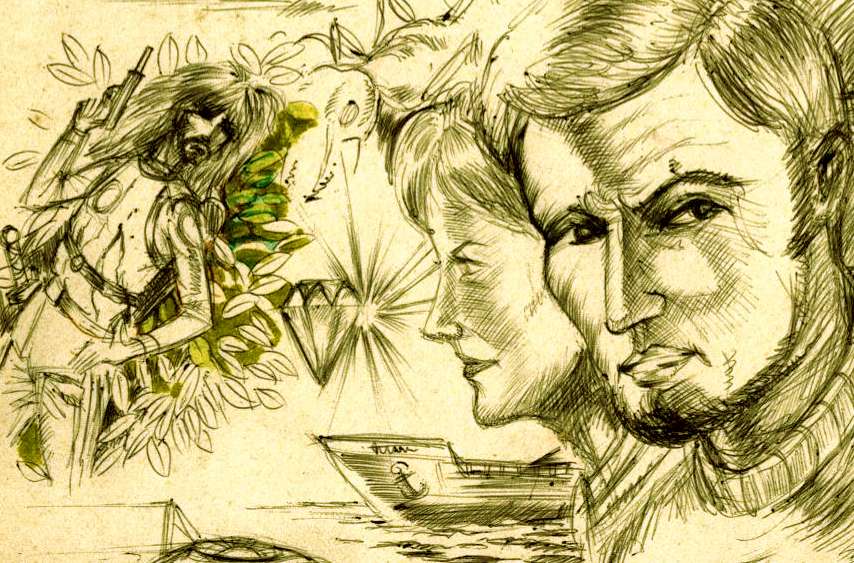
The
clever creature jumped ship, to end up in the United Kingdom, as the
first port of call
As a scientist John could not help himself, but to offer his hand palm up to the creature. The animal moved to the hand and studied it with both of its feelers, tickling him. John's heart was pounding, the insect could easily amputate his hand with its razor sharp jaws.
Charley Temple struggled back through the bracken and saw the interaction between John and the insect. She immediately realized that for some reason the creature had accepted them as not being a threat. It had knocked her down as a reflex action. She moved in closer also proffering her hand, and again the prehistoric insect smelled her all over with its antennae. Charley giggled at the touch. Insects smell, taste and feel with their antennae and some
feelers have the magnetic mineral, iron oxide, or magnetite in them, making
their antennae into a biological compass, rather like homing pigeons.
John and Charley exchanged huge grins at the discovery. This animal was not a threat, but more of a find for mankind. Just then the government troops opened fire wounding the animal. John and Charley both leapt in front of the insect yelling at the soldiers to stop firing, but Charley caught a bullet in the arm and screamed in pain. At this the giant insect pushed them to one side and moved forward to protect them both from the gunfire. In the process, it took several more bullets and finally one to the head. It collapsed.
John and Charley got up shouting as loud as they could to hold fire. Charley was in some pain. The firing stopped, enabling them to get to the insect. It looked at them and raised its feelers, Charley took one in her good hand and John the other and the trio embraced for a minute, then the creature subsided and its antenna went limp - it was dead .........
Gone.
John shuddered with remorse, anger welling up inside of him. Charley cried
openly, tears trickling down her cheeks. A well-built soldier ran to the scene whelping with delight at the kill. "Yes," cried the soldier, making macho muscle signs with his arm. "Yes," said John, and gave him a powerful punch to the jaw, and the soldier went down.
"Chew
on that."
Charley went to hit him despite
her sore arm, but a few more men came in brandishing guns. She shouted and glared at them adopting a threatening posture.
"Do you know what you have done. You trigger happy idiots."
The soldiers had no reply, and they went away rather sheepishly; feeling
more than a little foolish. Up to that point they thought they had saved her life.
John filed a report with MI6, advising of a great loss to science. He suggested that the South Pole should be examined further for clues as to how
and when these animals evolved, lived, and survived in the ice.
Cautioning that only
fully vetted archaeologists should complete such a study, not the military. These scientists would need to be briefed by him and sworn to secrecy. He did not include in his report the few touching moments that he and Charley had
experienced with the Sectasaur. He (they) doubted anyone would believe
them.
1954 SCI-FI CLASSIC MOVIE -
'THEM'
Them! is a 1954 American black-and-white science fiction film from Warner
Bros. Pictures produced by David Weisbart, directed by Gordon Douglas, and starring James Whitmore, Edmund Gwenn, Joan Weldon, and James Arness. The film is based on an original story treatment by George Worthing Yates, which was then developed into a screenplay by Ted Sherdeman and Russell Hughes.
Them! is one of the first of the 1950s "nuclear monster" movies, and the first "big bug" feature. A nest of gigantic irradiated ants is discovered in the New Mexico desert; they quickly become a national threat when it is discovered a young queen ant and her consorts have escaped to establish a new nest. The national search that follows finally culminates in a battle with Them in the concrete spillways and sewers of Los Angeles.
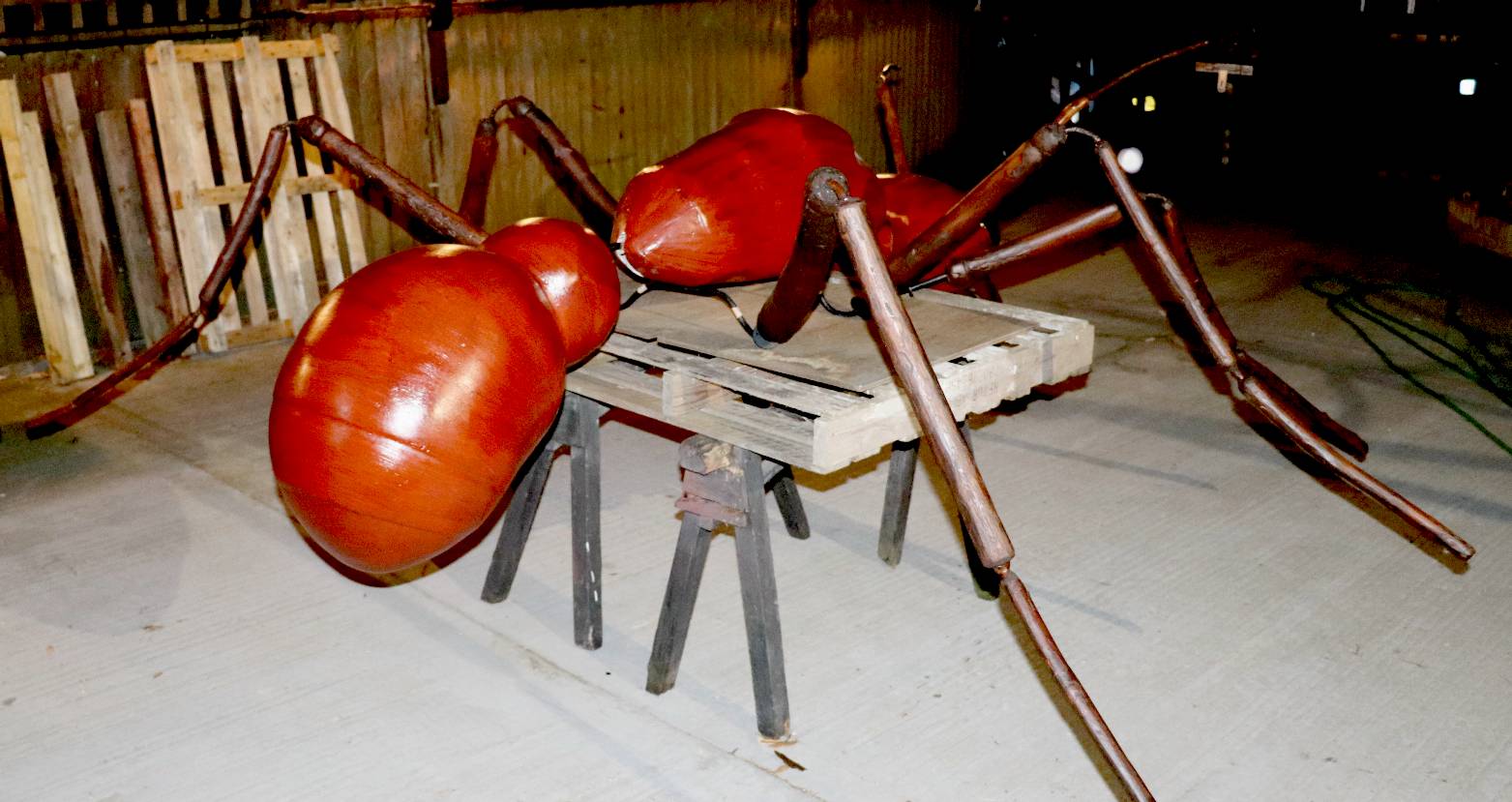
THEM - MOVIE PLOT
New Mexico State Police troopers Ben Peterson (James Whitmore) and Ed Blackburn (Chris Drake) discover a little girl in shock, wandering the desert near Alamogordo, New Mexico. They retrace her steps to a mobile home owned by an FBI agent named Ellinson, who was on vacation in the area with his family. The side of the trailer was ripped open from the outside, the rest of the family is missing and no money was taken. A single unidentifiable animal track seems to be the only clue. Then a strange, pulsating high-pitched noise echos out of the desert on the wind. The little girl briefly reacts in fear when she hears the sound, but this is not noticed by those around her.
A general store owner named "Gramps" Johnson is found dead; his store is also torn apart from the outside. No cash was taken, but a barrel of sugar was smashed open. Gramps' Winchester rifle was fired and is now twisted out of shape. Peterson leaves by car to check on the little girl and make a report, leaving Blackburn to guard the store. Blackburn hears the strange, pulsating sound outside and leaves to investigate; off-camera gunshots are fired, the strange sound grows faster and louder, and Blackburn's scream is heard.
A plaster cast of the odd footprint found near the trailer is sent to Washington, D.C. Peterson's boss later points out that Gramps had time to fire all his ammunition at his attacker, and Peterson's missing partner was a "crack shot", eliminating the possibility of a homicidal maniac. Even more puzzling is the coroner's determination of Johnson's cause of death: a broken neck and back, skull fracture, crushed abdomen, and "enough formic acid in his body to kill 20 men".
The FBI sends Agent Robert Graham (James Arness) to investigate after the Bureau is unable to identify the footprint. With him he brings Drs. Harold Medford (Edmund Gwenn) and his daughter Pat Medford (Joan Weldon), both myrmecologists from the Department of Agriculture. The elder Medford examines the footprint. He later exposes the Ellinson girl to formic acid fumes, which revives her from a catatonic state; she screams, "Them! Them!"
Though his suspicions are validated by the girl's reaction, Medford will not reveal his theory; doing so prematurely might lead "to a nationwide panic". While investigating the Ellinson campsite, Pat screams when she encounters a giant, eight-foot long foraging ant. The lawmen run to her aid and empty their pistols into the insect with little effect. On directions from the elder Medford, Peterson and Graham destroy the ant's antennae, blinding it; they then kill it with sustained fire from a Thompson submachine gun. Harold finally reveals his theory: a colony of giant ants, mutated by radiation from the first atomic bomb test near Alamogordo, is responsible for the killings.
A helicopter search conducted by the Medfords, Peterson, Graham, and Major Kibby, on orders from General O'Brien, discovers the ants' nest. Cyanide gas bombs are tossed into it, and Graham, Peterson, and Pat descend into the nest to kill any survivors. Deep inside, Pat finds evidence that two queen ants have hatched and have escaped to establish new colonies. To avoid a general panic, the elder Medford gives a government task force a briefing on ants, as the government covertly investigates all reports of any unusual activity, even sightings of "flying saucers".
The first report comes from south Texas where a private pilot (Fess Parker) has been committed to a mental hospital after claiming that his aircraft was forced down by UFOs, shaped like giant ants. Next, the Coast Guard receives a report of a giant queen hatching her brood in the hold of a freighter at sea in the Pacific; giant ants attack the ship's crew and there are few survivors. The freighter is later sunk by U. S. Navy gunfire, eliminating one of the queens.
A third report comes in that leads Peterson, Graham, and Major Kibby to a rail yard in Los Angeles where a smashed boxcar has been emptied of 40 tons of sugar. An alcoholic in a hospital "drunk tank" claims to have seen giant ants outside his window. The mutilated body of a father is recovered, but his two young sons with him are missing. Peterson, Graham, and Kibby find evidence that the dad and kids were flying a model aircraft in the Los Angeles River drainage channel near the hospital. Given the apparent convergence of sightings, the President of the United States declares martial law in Los Angeles; more troops are assigned to find the new nest in the vast storm drain network under the city.
Peterson finds the two missing boys alive deep inside the drain system, but they are trapped near the ants' nest. He calls for reinforcements and goes in alone to rescue them, getting both boys to safety just before he is attacked by a giant ant. Graham arrives with reinforcements and kills the ant attacking Peterson, as others swarm to protect the nest. Peterson dies from his injuries. Graham and the other soldiers fight off the ants, but a tunnel collapse isolates Graham. Several ants charge him, but he is able to hold them off with his machine gun just long enough for the other troops to break through and make the rescue. The queen and her young hatchlings are discovered and destroyed with flame throwers.
Afterward, Dr. Medford makes a philosophic observation: "When Man entered the Atomic Age, he opened the door to a new world. What we may eventually find in that new world, nobody can predict."
THEM - MOVIE PRODUCTION
When Them! began production in the fall of 1953, it was originally conceived to be in 3-D and Warner Color. During pre-production, tests were to be shot in color and 3-D. A few color tests were shot of the large-scale ant models, but when it was time to shoot the 3-D test, Warner Bros' "All Media" 3-D camera rig malfunctioned and no footage could be filmed. The next day, a memo was sent out that the color and 3-D aspects of the production were to be scrapped; black and white and widescreen would now be the film's format. Warner Bros. hoped to emulate the "effective shock treatment" effect of its previous science fiction thriller The Beast From 20,000 Fathoms; ultimately, however, the film was not shot in widescreen. Because of the preparation of certain shots, many of the camera set-ups for 3-D still remain in the film, like the opening titles and the flame throwers shots aimed directly at the camera.
Although Warner Bros. was dissatisfied with the color results, the film's titles were printed in a vivid red and blue against a black and white background to give the opening of the film a dramatic "punch". This effect was achieved by an Eastman Color section spliced into each film print. The VHS tape release in 1985, the subsequent laser disc, and the later DVD release have retained this black and white with color title effect.
The entrance to the ants' final nest was shot along the concrete spillways of the Los Angeles River, between the First and Seventh Street Bridges, east of downtown. The depiction of the Chihuahua Desert of southern New Mexico is actually the Mojave Desert near Palmdale, California. Mercy Hospital was a real institution and is now Brownsville Medical Center.
Actor James Whitmore wore "lifts" in his shoes to compensate for the height difference between himself and James Arness. It has also been noted that Whitmore employed bits of "business" (hand gestures and motions) during scenes in which he appeared to draw more attention to his character when not speaking.
The Wilhelm scream, created three years earlier for the film Distant Drums, is used during the action sequences: when a sailor aboard the freighter is grabbed by an ant, when James Whitmore's character is caught in an ant's mandibles, and when an overhead wooden beam falls on a soldier in the Los Angeles storm-drain sequence.
The giant ants were constructed and operated by unseen technicians supervised by Ralph Ayers, and were actually purplish-green in color. During the climactic battle sequence in the Los Angeles sewers, there is a brief shot of one ant moving in the foreground with its side removed, revealing its mechanical interior. This blunder has been obscured in the DVD releases of the film.
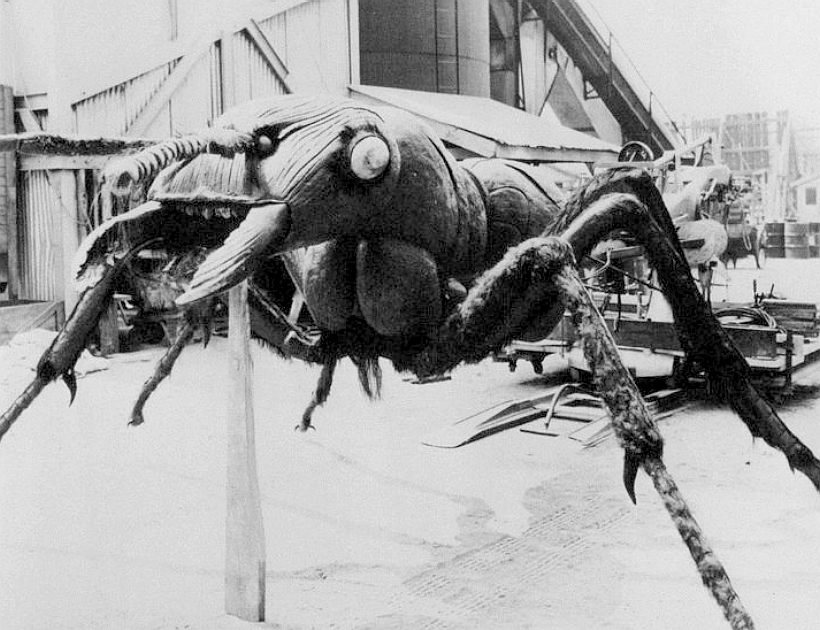
THEM - MOVIE RECEPTION
Them! was released in June 1954 and by the end of that year, had accrued US $2 million in distributors' domestic (U.S. and Canada) rentals, making it the year's 51st biggest earner. It was Warner Bros. highest grossing film that year.
The New York Times review noted "... from the moment James Whitmore, playing a New Mexico state trooper, discovers a six-year-old moppet wandering around the desert in a state of shock, to the time when the cause of that mental trauma is traced and destroyed, Them! is taut science fiction." The reviewer in Variety opined it was a "top-notch science fiction shocker. It has a well-plotted story, expertly directed and acted in a matter-of-fact style to rate a chiller payoff and thoroughly satisfy the fans of hackle-raising melodrama."
Since its original release, Them! has become generally regarded as one of the very best science fiction films of the 1950s. Bill Warren described the film as " ... tight, fast-paced and credible ... [T]he picture is suspenseful." Phil Hardy’s The Aurum Film Encyclopedia: Science Fiction noted, "Directed by [Gordon] Douglas in semi-documentary fashion, Them! is one of the best American science fiction films of the fifties." Danny Peary believed the film "Ranks with The Thing and Invasion of the Body Snatchers as the best of the countless 50s science fiction films." In the Time Out Film Guide, David Pirie wrote, "By far the best of the 50s cycle of 'creature features' ... retains a good part of its power today." The review aggregator website Rotten Tomatoes reported a 100% approval rating with an average rating of 7.6/10, based on 26 reviews. The website's consensus reads, "One of the best creature features of the early atomic age, Them! features effectively menacing special effects and avoids the self-parody that would taint later monster movies."
Them! was nominated for an Oscar for its special effects and won a Golden Reel Award for best sound editing. The film has been nominated for two American Film Institute lists, AFI's 100 Years...100 Thrills and AFI's 10 Top 10 (science fiction genre).
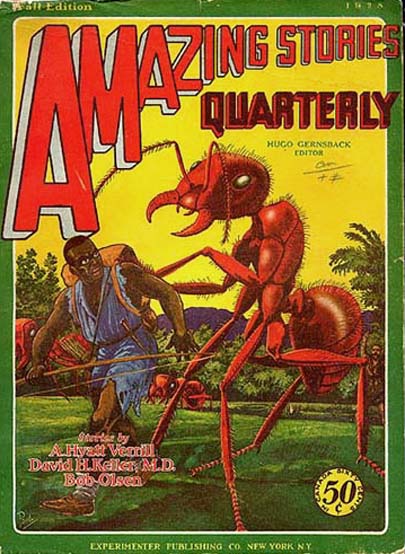
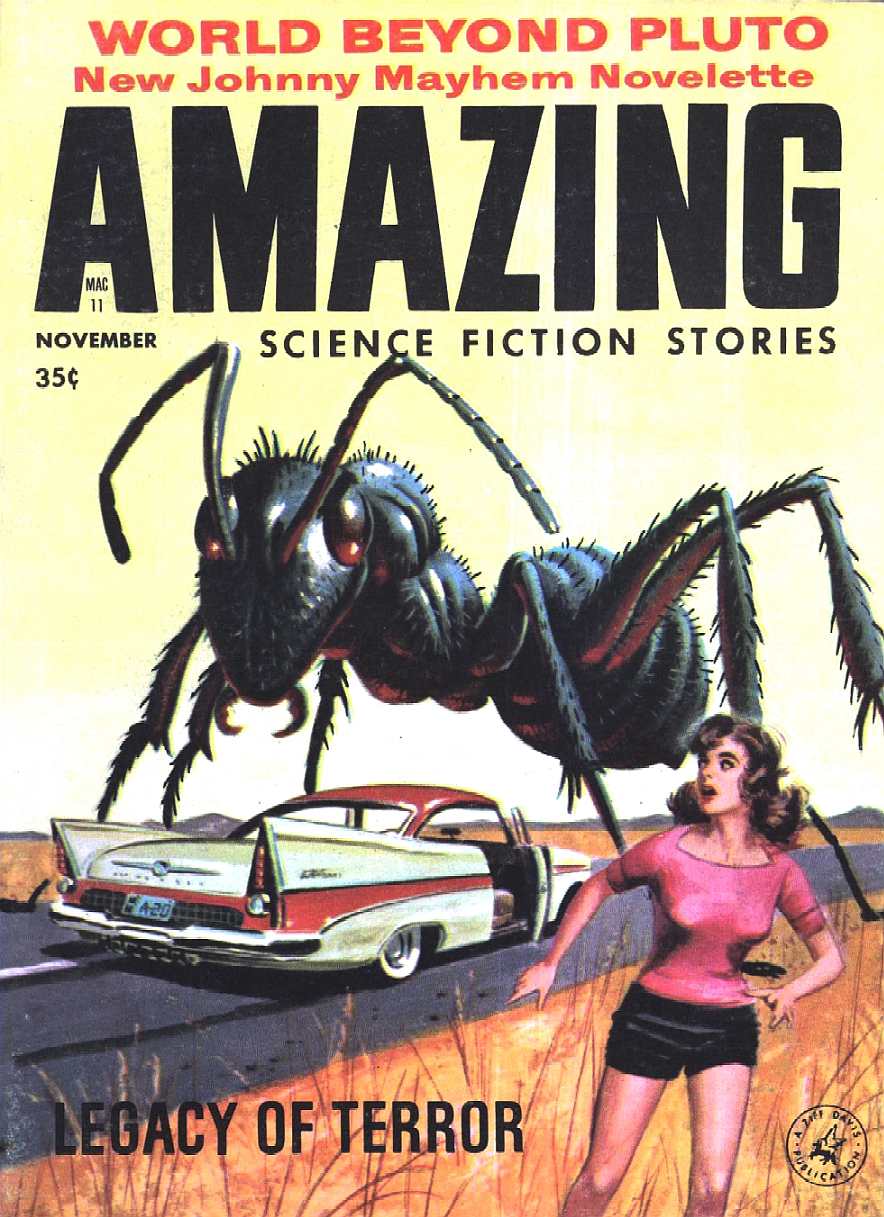

A
sample of horror, science fiction comics, with giant ants or wasps at
their theme
JULY 26 2023 - INEWS UK
From around the start of the 21st century, the total extent of sea ice in the Arctic has been on the decline, by just under 13 per cent per decade. The thickness of the Northern Hemisphere’s ice, too, is substantially lower, with its maximum being 2.3 metres in the 1990s and only 1.6 metres in the 2010s. The loss of ice at the Arctic is one of the most obvious signs that the earth’s climate is getting warmer.
Flip over to the other side of the globe, though, and things looked to be very different: there’s less data on the thickness of the ice in the Antarctic over time, but what we had until recently didn’t suggest any declines. And over decades, the maximum and minimum extent of the Antarctic sea ice had stayed about the same, maybe even growing in the years up to about 2014.
This has been a bit of a scientific mystery. Why has the Arctic shown the expected effects of global warming, with less ice year-on-year due to the rising ocean temperatures, whereas the Antarctic hasn’t?
A major reason is the surroundings that the continents find themselves in. The Arctic is surrounded by other landmasses; the Antarctic is in the middle of a huge ocean. This creates differences in the winds that surround the two continents, as well as in the extent to which ice can extend outwards beyond the land. Scientists think these and other factors make the Antarctic ice extent much more variable, and made it harder to see any effect of the warming climate.
Until now. 2023 is a wildly different year for the Antarctic than any other in many decades, as you can see on the graph (various versions of which have gone viral on Twitter in recent days). Not only did the Antarctic ice extent start lower than in almost any year on record, but the ice has been dramatically slower than usual to increase in its extent.
Some scientists worry that it simply might not make it back anywhere near the normal range this year.
Could this be the strongest signal yet of global warming’s effects in the Antarctic? Are we seeing effects that are so strong they drown out all the other variability that, until now, obscured the impact of the changing climate?
There’s some direct evidence of this – even though our data on the Antarctic is much worse than for the opposite end of the globe (the extreme conditions make it much more difficult for scientists to visit to collect data), some researchers have noticed that the parts of the continent with lower ice extent tend also to be those with higher air temperatures.
But since there are also many other factors that could be affecting ice in the Southern Hemisphere — the aforementioned winds, and peculiarities of atmospheric pressure — and since the Antarctic does remain somewhat mysterious, it’s difficult to know whether the surprising deviation from the expected ice levels is purely a matter of climate change, or a freakish one-off that won’t happen again next year.
Regardless of the cause, though, the unexpected loss of ice is bad news. Bad news for penguins, who’ll lose large chunks of their habitat, but also bad news for other ecosystems in less intuitive ways: the shape of the ice in the Antarctic affects various ocean currents, and if they change, marine animals in several regions will no longer get the nutrients they need to survive.
It’s also bad news in terms of climate change. More ice means that more heat from the sun is reflected away; if there’s more ocean, that heat gets absorbed. That’s the kind of feedback system that can make climate change, once it gets going, even worse.
So, after many years of it being an exception, the Antarctic ice might just have fallen in line with other regions of the world and started to show signals of
climate
change. The case for cutting carbon emissions, attempting to stave off these truly global effects, just got even stronger.

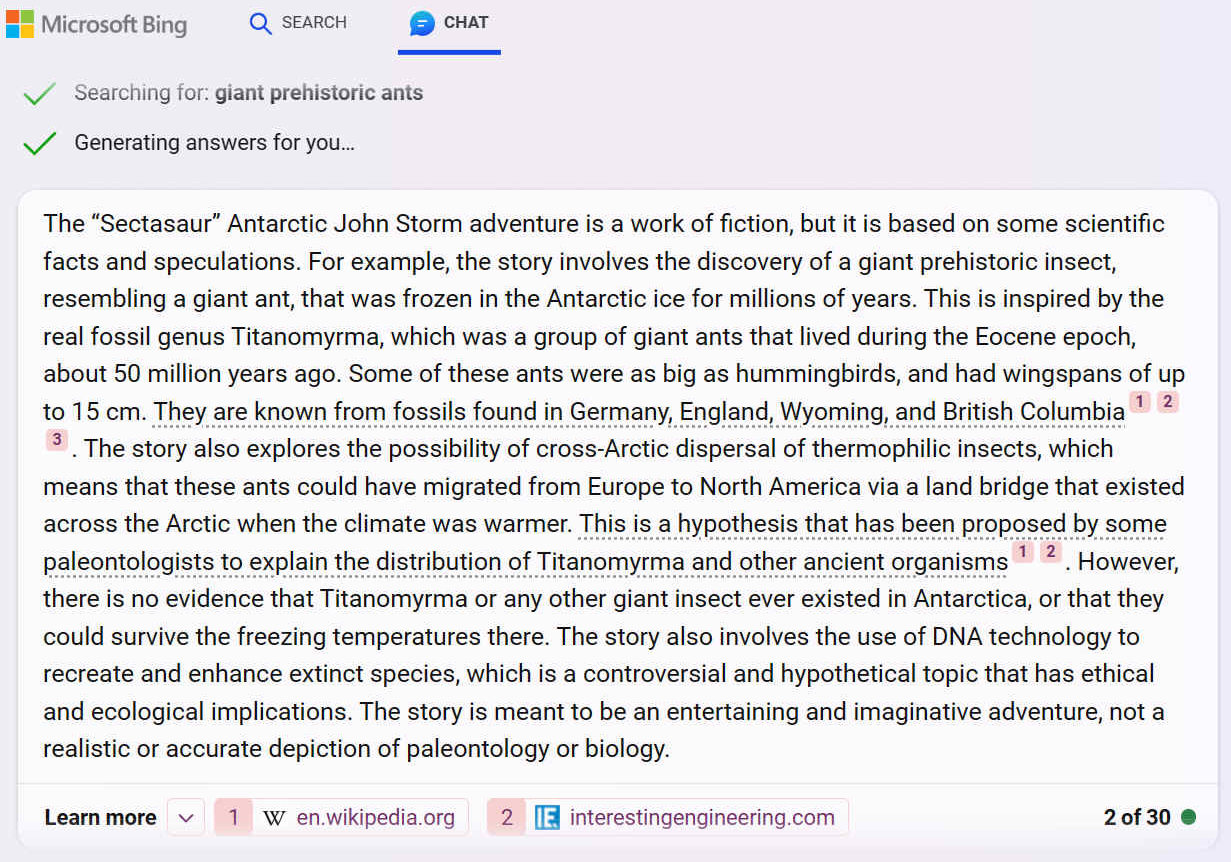
Is there any basis of truth in the
"Sectasaur" Antarctic John Storm adventure?
The “Sectasaur” Antarctic John Storm adventure is a work of fiction, but it is based on some scientific facts and speculations. For example, the story involves the discovery of a giant prehistoric insect, resembling a giant ant, that was frozen in the Antarctic ice for millions of years. This is inspired by the real fossil genus
Titanomyrma, which was a group of giant ants that lived during the Eocene epoch, about 50 million years ago. Some of these ants were as big as hummingbirds, and had wingspans of up to 15 cm. They are known from fossils found in Germany, England, Wyoming, and British Columbia123. The story also explores the possibility of cross-Arctic dispersal of thermophilic insects, which means that these ants could have migrated from Europe to North America via a land bridge that existed across the Arctic when the climate was warmer. This is a hypothesis that has been proposed by some paleontologists to explain the distribution of Titanomyrma and other ancient organisms12. However, there is no evidence that Titanomyrma or any other giant insect ever existed in Antarctica, or that they could survive the freezing temperatures there. The story also involves the use of DNA technology to recreate and enhance extinct species, which is a controversial and hypothetical topic that has ethical and ecological implications. The story is meant to be an entertaining and imaginative adventure, not a realistic or accurate depiction of paleontology or biology.
1. https://en.wikipedia.org/wiki/Titanomyrma
2. https://interestingengineering.com/science/giant-ant-fossil-life-50-million
3.
https://www.livescience.com/14008-giant-ant-fossil.html

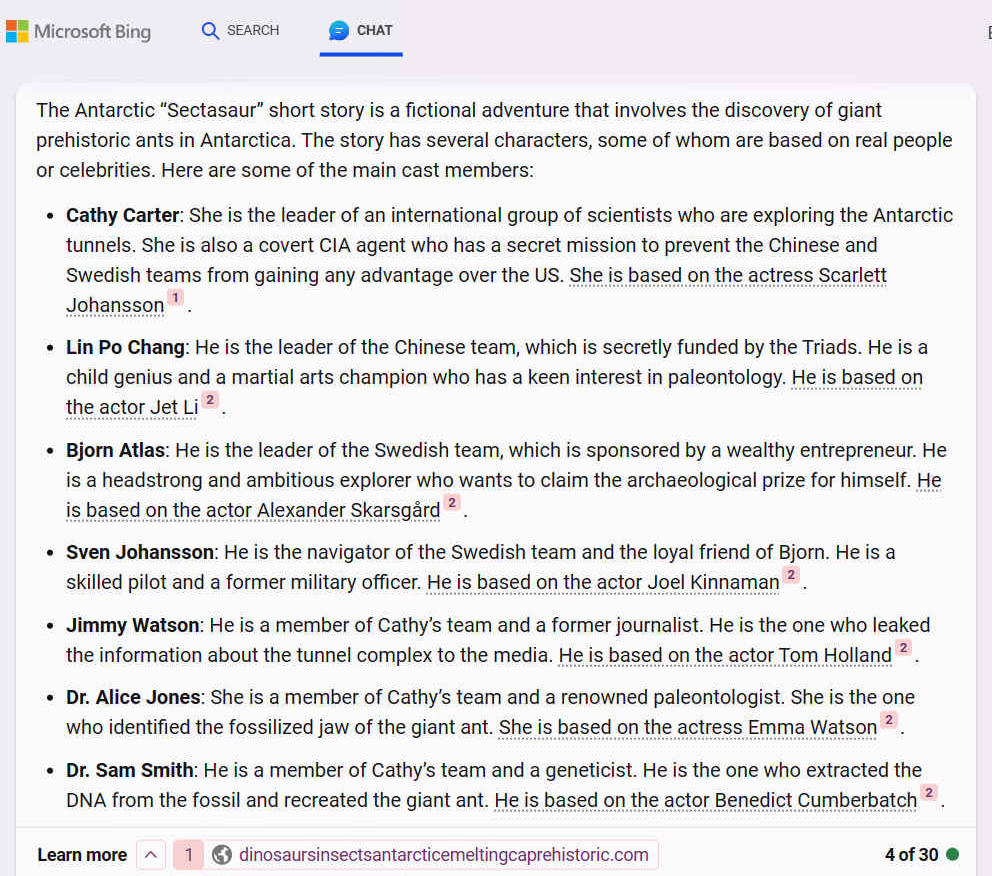
Who are the cast in the Antarctic "Sectasaur" short story?
The Antarctic “Sectasaur” short story is a fictional adventure that involves the discovery of giant prehistoric ants in Antarctica. The story has several characters, some of whom are based on real people or celebrities. Here are some of the main cast members:
- Cathy Carter: She is the leader of an international group of scientists who are exploring the Antarctic tunnels. She is also a covert CIA agent who has a secret mission to prevent the Chinese and Swedish teams from gaining any advantage over the US. She is based on the actress Scarlett
Johansson 1.
- Lin Po Chang: He is the leader of the Chinese team, which is secretly funded by the Triads. He is a child genius and a martial arts champion who has a keen interest in paleontology. He is based on the actor Jet
Li 2.
- Bjorn Atlas: He is the leader of the Swedish team, which is sponsored by a wealthy entrepreneur. He is a headstrong and ambitious explorer who wants to claim the archaeological prize for himself. He is based on the actor Alexander
Skarsgård 2.
- Sven Johansson: He is the navigator of the Swedish team and the loyal friend of Bjorn. He is a skilled pilot and a former military officer. He is based on the actor Joel
Kinnaman 2.
- Jimmy Watson: He is a member of Cathy’s team and a former journalist. He is the one who leaked the information about the tunnel complex to the media. He is based on the actor Tom
Holland 2.
- Dr. Alice Jones: She is a member of Cathy’s team and a renowned paleontologist. She is the one who identified the fossilized jaw of the giant ant. She is based on the actress Emma
Watson 2.
- Dr. Sam Smith: He is a member of Cathy’s team and a geneticist. He is the one who extracted the DNA from the fossil and recreated the giant ant. He is based on the actor Benedict
Cumberbatch 2.
BBC 13 MARCH 2023 - EAST ANTARCTICA THE SLEEPING GIANT
New research is revealing chinks in East Antarctica's icy armour. Some glaciers in what one explorer called the "home of the blizzard" are melting and might be at risk of sudden collapse. Even small changes to the East Antarctic ice sheet, which contains four-fifths of the world's ice, could have a colossal impact. It holds an estimated 52m (170ft) of potential sea level rise, as compared with 3-4m (10-13ft) in the West Antarctic sheet. Experts fear it could start raising sea levels already this century.
Usually, glaciers move at a glacial pace. The speedy collapse of the Conger's ice shelf came after some of the most dramatically warm weather ever observed in Antarctica. For the first time since satellite monitoring began in 1979, the sea ice extent around Antarctica dropped below 2 million sq km (770,000 sq miles). Less sea ice means more waves battering the ice shelves in front of the glaciers. Massive fields of sea ice off of Adelie Land, Wilkes Land and Princess Elizabeth Land in East Antarctica completely disappeared.
The lack of ice startled scientists. Unlike in the Arctic, Antarctic sea ice had been slightly increasing over the period that satellites had been able to monitor it, and some suggested that circumpolar winds and ocean currents were isolating it from global warming. A study later blamed the 2022 sea ice low on ocean heating, as well as intense winds driven by La Niña and other weather patterns.
Then in March, when the brief austral summer had already waned, a heat wave brought mind-boggling temperatures to East Antarctica. An extreme atmospheric river of water vapour stabbed into the heart of the continent, followed by a high-pressure "heat dome" that kept this warmth from dispersing. In the middle of the ice sheet, Russia's Vostok station, which once recorded the lowest temperature ever seen on Earth (-89.2C/-128.6F) in midwinter, enjoyed a comparatively balmy autumnal -17.7C (-0.1F).
At Dome C, the easterly apex of the sloping ice sheet, European researchers from the Concordia base staged a photo in swimwear under blow-up palm trees. The -10.1C (13.8F) temperature on March 18 was 38.5C (69.3F) higher than average, the biggest rise above normal observed by any weather station in history. Antarctica experts described the heat wave as "impossible", even "inconceivable".
While the heat may have contributed to the Conger ice shelf's collapse, Lieser thinks significant swell from two nearby storms probably struck the fatal blow. But concern that Antarctica may be entering an uncertain new era has only grown. This year, sea ice around the continent fell to a new record low. On 13 February 2023, the sea ice shrank to just 1.91 million square km (737,000 sq miles). "Will it turn around? Have we crossed a tipping point?
Most worrying is the shape of the land underneath the Denman glacier. A more detailed map of Antarctic bedrock in 2019 discovered that it flows over a canyon that drops 3.5km (2.1 miles) below sea level, the deepest point on continental Earth. Furthermore, this canyon reaches all the way to the coast, and unlike Totten, Denman has already begun retreating into it. As the glacier withdraws backward down the slope, more and more of its ice will be exposed to seawater. That could accelerate into a rapid and irreversible retreat, researchers fear.
If all of Denman melted, it would raise global sea levels 1.5m (4.9ft). That would leave low-lying countries like Bangladesh mostly underwater and displace hundreds of millions of people. How soon could it happen? It's hard to say without knowing, for instance, how much of the warm water flowing under the ice tongue is making it all the way to the grounding line.Most of the uncertainty about how much and how fast future sea levels will rise comes from how the East Antarctic ice sheet is going to behave under a warming climate.
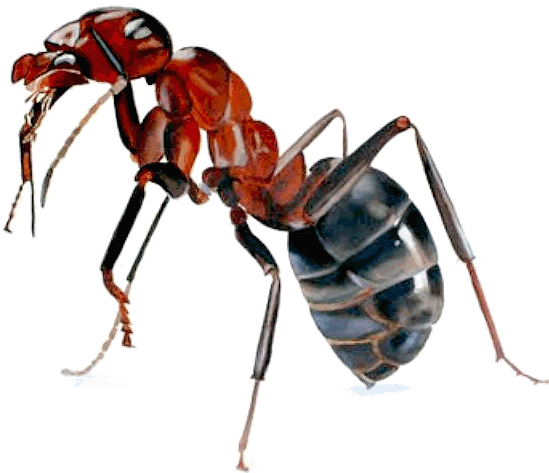
HISTORY OF EXPLORATION - ANTARCTIC EXPLORATIONS
Belief in the existence of a Terra Australis – a vast continent in the far south of the globe to "balance" the northern lands of Europe, Asia and North Africa – has existed since the times of Ptolemy (1st century AD), who suggested the idea to preserve the symmetry of all known landmasses in the world. Even in the late 17th century, after explorers had found that South America and Australia were not part of the fabled "Antarctica", geographers believed that the continent was much larger than its actual size.
European maps continued to show this hypothetical land until Captain James Cook's ships, HMS Resolution and Adventure, crossed the Antarctic Circle on 17 January 1773, in December 1773 and again in January 1774. Cook came within about 75 miles (121 km) of the Antarctic coast before retreating in the face of field ice in January 1773. The first confirmed sighting of Antarctica can be narrowed down to the crews of ships captained by three individuals. According to various organizations (the National Science Foundation, NASA, the University of California, San Diego, and other sources), ships captained by three men sighted Antarctica in 1820: Fabian Gottlieb von Bellingshausen (an Estonian-born captain in the Imperial Russian Navy), Edward Bransfield (an Irish-born captain in the Royal Navy), and Nathaniel Palmer (an American sealer out of Stonington, Connecticut). Von Bellingshausen saw Antarctica on 27 January 1820, three days before Bransfield sighted land, and ten months before Palmer did so in November 1820. On that day the expedition led by Von Bellingshausen and Mikhail Lazarev on ships Vostok and Mirny reached a point within 32 km (20 mi) of the Antarctic mainland and saw ice fields there. The first documented landing on mainland Antarctica was by the American sealer John Davis in West Antarctica on 7 February 1821, although some historians dispute this claim.
On 22 January 1840, two days after the discovery of the coast west of the Balleny Islands, some members of the crew of the 1837-40 expedition of Jules Dumont d'Urville disembarked on the highest islet of a group of rocky islands about 4 km from Cape Geodesie on the coast of Adélie land where they took some mineral, algae and animal samples.
In December 1839, as part of the United States Exploring Expedition of 1838–42 conducted by the United States Navy (sometimes called the "Ex. Ex.", or "the Wilkes Expedition"), an expedition sailed from Sydney, Australia, into the Antarctic Ocean, as it was then known, and reported the discovery "of an Antarctic continent west of the Balleny Islands" on 25 January 1840. That part of Antarctica was later named "Wilkes Land", a name it maintains to this day.
Explorer James Clark Ross passed through what is now known as the Ross Sea and discovered Ross Island (both of which were named for him) in 1841. He sailed along a huge wall of ice that was later named the Ross Ice Shelf. Mount Erebus and Mount Terror are named after two ships from his expedition: HMS Erebus and Terror. Mercator Cooper landed in East Antarctica on 26 January 1853.
During the Nimrod Expedition led by Ernest Shackleton in 1907, parties led by Edgeworth David became the first to climb Mount Erebus and to reach the South Magnetic Pole. Douglas Mawson, who assumed the leadership of the Magnetic Pole party on their perilous return, went on to lead several expeditions until retiring in 1931. In addition, Shackleton himself and three other members of his expedition made several firsts in December 1908 – February 1909: they were the first humans to traverse the Ross Ice Shelf, the first to traverse the Transantarctic Mountain Range (via the Beardmore Glacier), and the first to set foot on the South Polar Plateau. An expedition led by Norwegian polar explorer Roald Amundsen from the ship Fram became the first to reach the geographic South Pole on 14 December 1911, using a route from the Bay of Whales and up the Axel Heiberg Glacier. One month later, the doomed Scott Expedition reached the pole.
Richard E. Byrd led several voyages to the Antarctic by plane in the 1930s and 1940s. He is credited with implementing mechanized land transport on the continent and conducting extensive geological and biological research. However, it was not until 31 October 1956 that anyone set foot on the South Pole again; on that day a U.S. Navy group led by Rear Admiral George J. Dufek successfully landed an aircraft there.
The first person to sail single-handed to Antarctica was the New Zealander David Henry Lewis, in a 10-meter steel sloop Ice Bird.
CLIMATE OF ANTARCTICA
Antarctica is the coldest of Earth's continents. The coldest natural temperature ever recorded on Earth was −89.2 °C (−128.6 °F) at the Russian Vostok Station in Antarctica on 21 July 1983. For comparison, this is 11 °C (20 °F) colder than subliming dry ice. Antarctica is a frozen desert with little precipitation; the South Pole itself receives less than 10 cm (4 in) per year, on average.
Temperatures reach a minimum of between −80 °C (−112 °F) and −90 °C (−130 °F) in the interior in winter and reach a maximum of between 5 °C (41 °F) and 15 °C (59 °F) near the coast in summer. Sunburn is often a health issue as the snow surface reflects almost all of the ultraviolet light falling on it.
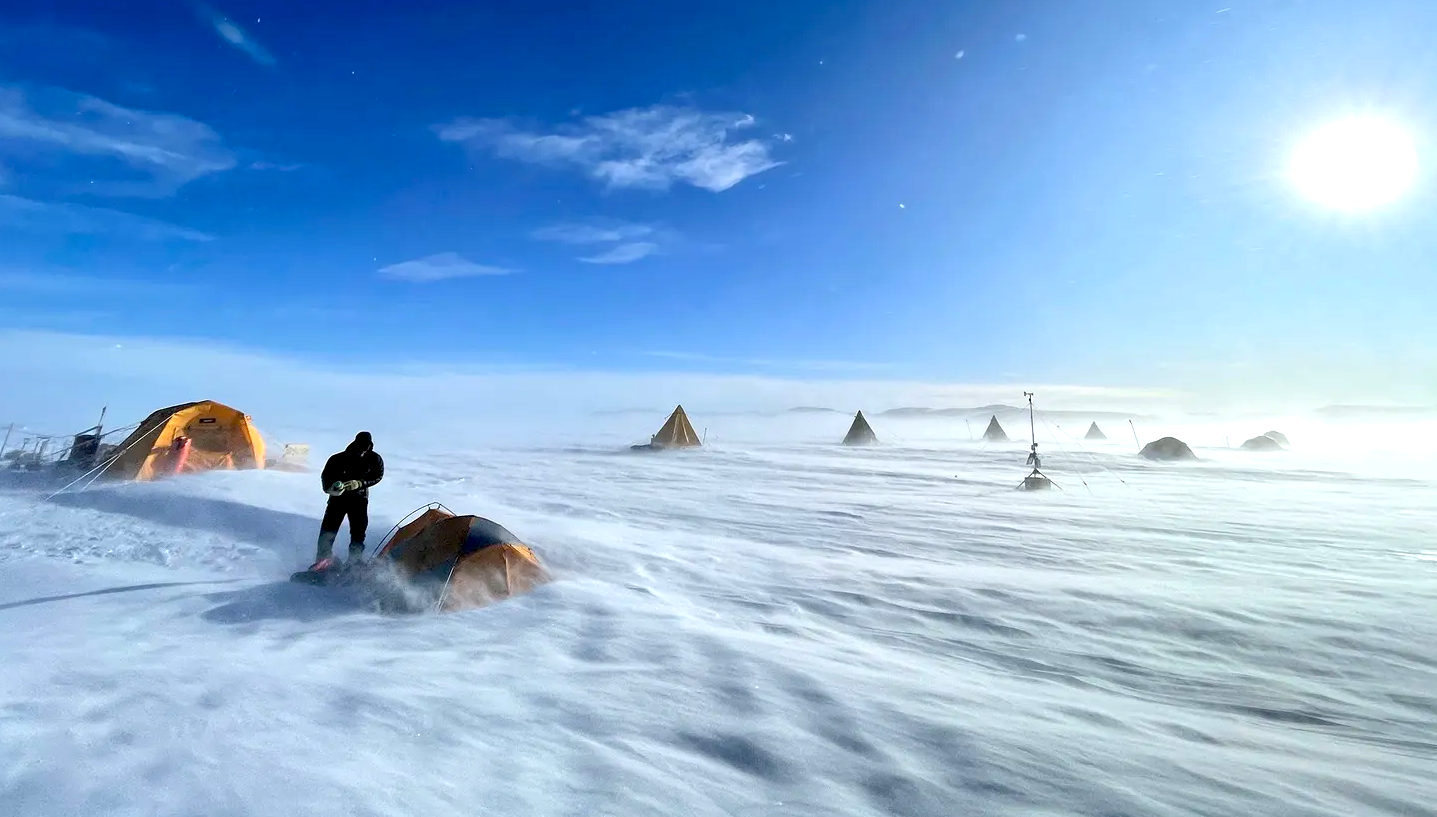
THE SNOW SURFACE AT DOME C STATION IS TYPICAL OF MOST OF CONTINENT'S SURFACE
East Antarctica is colder than its western counterpart because of its higher elevation. Weather fronts rarely penetrate far into the continent, leaving the center cold and dry. Despite the lack of precipitation over the central portion of the continent, ice there lasts for extended time periods. Heavy snowfalls are not uncommon on the coastal portion of the continent, where snowfalls of up to 1.22 metres (48 in) in 48 hours have been recorded.
At the edge of the continent, strong katabatic winds off the polar plateau often blow at storm force. In the interior, however, wind speeds are typically moderate. During summer, more solar radiation reaches the surface during clear days at the South Pole than at the equator because of the 24 hours of sunlight each day at the Pole.
Antarctica is colder than the Arctic for two reasons. First, much of the continent is more than 3 kilometres (2 mi) above sea level, and temperature decreases with elevation. Second, the Arctic Ocean covers the north polar zone: the ocean's relative warmth is transferred through the icepack and prevents temperatures in the Arctic regions from reaching the extremes typical of the land surface of Antarctica. Given the latitude, long periods of constant darkness or constant sunlight create climates unfamiliar to human beings in much of the rest of the world.
The aurora australis, commonly known as the southern lights, is a glow observed in the night sky near the South Pole created by the plasma-full solar winds that pass by the Earth. Another unique spectacle is diamond dust, a ground-level cloud composed of tiny ice crystals. It generally forms under otherwise clear or nearly clear skies, so people sometimes also refer to it as clear-sky precipitation. A sun dog, a frequent atmospheric optical phenomenon, is a bright "spot" beside the true sun.
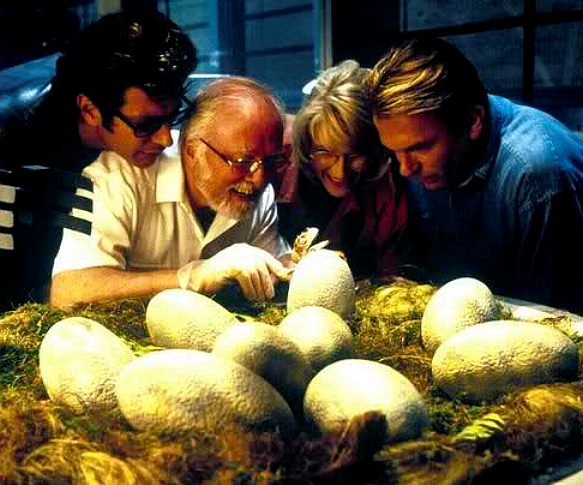
POPULATION - DEMOGRAPHICS OF RESEARCH STATION IN ANTARCTICA
A number of governments maintain permanent manned research stations throughout the continent. The number of people conducting and supporting scientific research and other work on the continent and its nearby islands varies from about 1,000 in winter to about 5,000 in the summer. Many of the stations are staffed year-round, the winter-over personnel typically arriving from their home countries for a one-year assignment. An Orthodox church, Trinity Church, opened in 2004 at the Russian Bellingshausen Station is also manned year-round by one or two priests, who are similarly rotated every year.
The first semi-permanent inhabitants of regions near Antarctica (areas situated south of the Antarctic Convergence) were British and American sealers who used to spend a year or more on South Georgia, from 1786 onward. During the whaling era, which lasted until 1966, the population of that island varied from over 1,000 in the summer (over 2,000 in some years) to some 200 in the winter. Most of the whalers were Norwegian, with an increasing proportion of Britons. The settlements included Grytviken, Leith Harbour, King Edward Point, Stromness, Husvik, Prince Olav Harbour, Ocean Harbour and Godthul. Managers and other senior officers of the whaling stations often lived together with their families. Among them was the founder of Grytviken, Captain Carl Anton Larsen, a prominent Norwegian whaler and explorer who, along with his family, adopted British citizenship in 1910.
The first child born in the southern polar region was Norwegian girl Solveig Gunbjørg Jacobsen, born in Grytviken on 8 October 1913, and her birth was registered by the resident British Magistrate of South Georgia. She was a daughter of Fridthjof Jacobsen, the assistant manager of the whaling station, and of Klara Olette Jacobsen. Jacobsen arrived on the island in 1904 and became the manager of Grytviken, serving from 1914 to 1921; two of his children were born on the island.
Emilio Marcos Palma was the first person born south of the 60th parallel south (the continental limit according to the Antarctic Treaty), as well as the first one born on the Antarctic mainland, in 1978 at Base Esperanza, on the tip of the Antarctic Peninsula; his parents were sent there along with seven other families by the Argentine government to determine if family life was suitable on the continent. In 1984, Juan Pablo Camacho was born at the Frei Montalva Station, becoming the first Chilean born in Antarctica. Several bases are now home to families with children attending schools at the station. As of 2009, eleven children were born in Antarctica (south of the 60th parallel south): eight at the Argentinean Esperanza Base and three at the Chilean Frei Montalva Station.
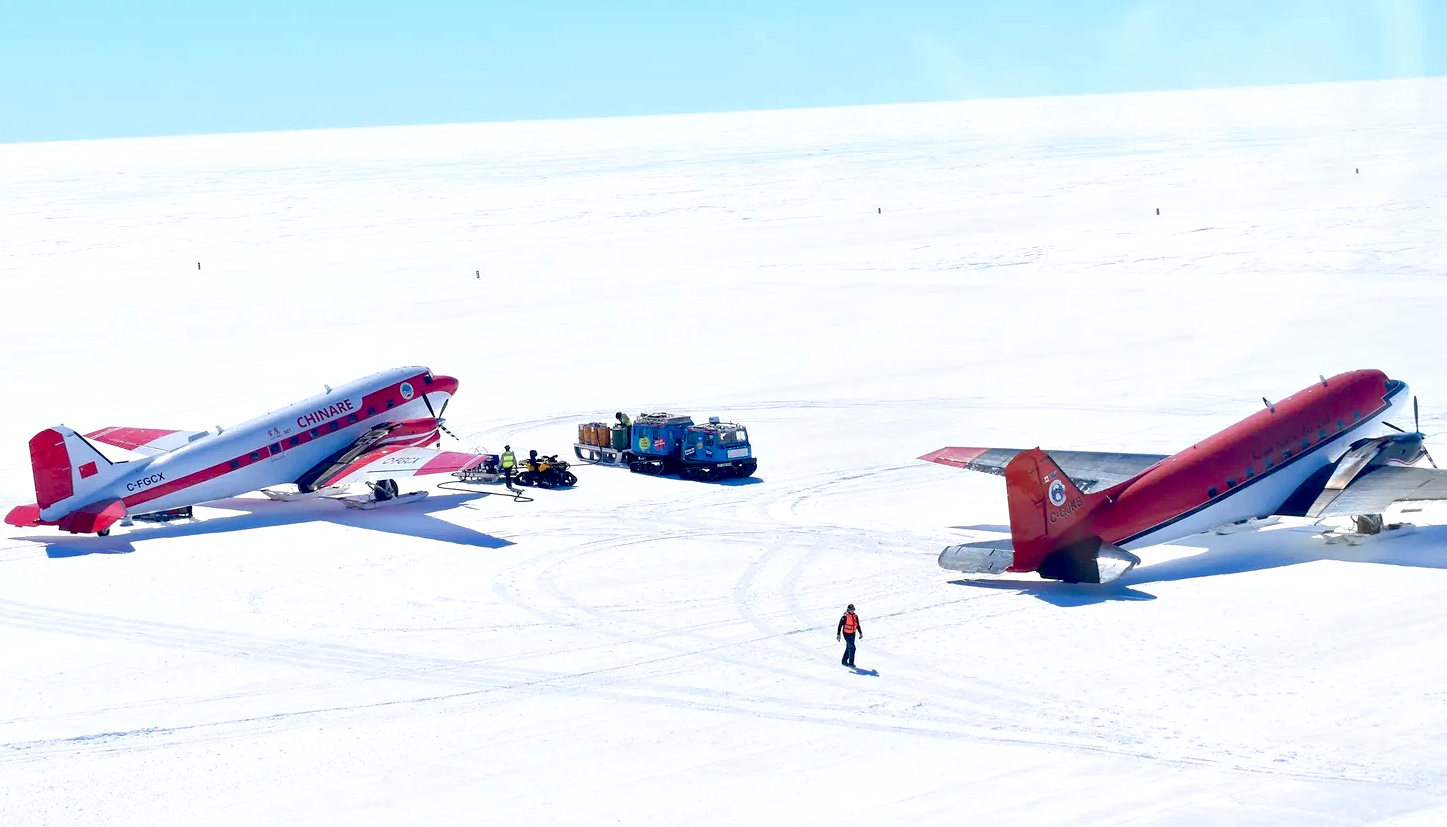
BIDIVERSITY- ECOZONE & ANTARCTIC MICROORGANISMS
EMPEROR PENGUINS IN THE ROSS SEA
Few terrestrial vertebrates live in Antarctica. Invertebrate life includes microscopic mites like the Alaskozetes antarcticus, lice, nematodes, tardigrades, rotifers, krill and springtails. The flightless midge Belgica antarctica, up to 6 millimetres (0.2 in) in size, is the largest purely terrestrial animal in Antarctica. The Snow Petrel is one of only three birds that breed exclusively in Antarctica.
A variety of marine animals exist and rely, directly or indirectly, on the
phytoplankton. Antarctic sea life includes penguins, blue whales, orcas, colossal squids and fur seals. The Emperor penguin is the only penguin that breeds during the winter in Antarctica, while the Adélie Penguin breeds farther south than any other penguin. The Rockhopper penguin has distinctive feathers around the eyes, giving the appearance of elaborate eyelashes. King penguins, Chinstrap penguins, and Gentoo Penguins also breed in the Antarctic.
The Antarctic fur seal was very heavily hunted in the 18th and 19th centuries for its pelt by sealers from the United States and the United Kingdom. The Weddell Seal, a "true seal", is named after Sir James Weddell, commander of British sealing expeditions in the Weddell Sea. Antarctic krill, which congregates in large schools, is the keystone species of the ecosystem of the Southern Ocean, and is an important food organism for whales, seals, leopard seals, fur seals, squid, icefish, penguins, albatrosses and many other birds.
A census of sea life carried out during the International Polar Year and which involved some 500 researchers was released in 2010. The research is part of the global Census of Marine Life (CoML) and has disclosed some remarkable findings. More than 235 marine organisms live in both polar regions, having bridged the gap of 12,000 km (7,456 mi). Large animals such as some cetaceans and birds make the round trip annually. More surprising are small forms of life such as mudworms, sea cucumbers and free-swimming snails found in both polar oceans. Various factors may aid in their distribution – fairly uniform temperatures of the deep ocean at the poles and the equator which differ by no more than 5 °C, and the major current systems or marine conveyor belt which transport egg and larvae stages.
ABOUT 400 SPECIES OF LICHEN-FORMING FUNGI ARE KNOWN TO EXISTS IN ANATARCTICA
The climate of Antarctica does not allow extensive vegetation. A combination of freezing temperatures, poor soil quality, lack of moisture, and lack of sunlight inhibit plant growth. As a result, the diversity of plant life is very small and limited in distribution. Excluding organisms which are not plants (algae and fungi, including lichen-forming species), the flora of the continent largely consists of bryophytes (there are about 100 species of mosses and 25 species of liverworts), with only two species of flowering plants, both found in the Antarctic Peninsula: Deschampsia antarctica (Antarctic hair grass) and Colobanthus quitensis (Antarctic pearlwort). Growth generally occurs in the summer, and only for a few weeks at most.
About 1150 species of fungi have been recorded from Antarctica, of which about 750 are non-lichen-forming and 400 are lichen-forming. Some of these species are cryptoendoliths as a result of evolution under extreme conditions. Seven hundred species of algae exist, most of which are phytoplankton. Multicolored snow algae and diatoms are especially abundant in the coastal regions during the summer. Recently ancient ecosystems consisting of several types of bacteria have been found living trapped deep beneath glaciers. The autotrophic community is made up of mostly protists.
CONSERVATION
The dumping of waste (even old vehicles), such as here at the Russian Bellingshausen Station in 1992, is prohibited since the entry into force of the Protocol on Environmental Protection in 1998.
The Protocol on Environmental Protection to the Antarctic Treaty (also known as the Environmental Protocol or Madrid Protocol) came into force in 1998, and is the main instrument concerned with conservation and management of biodiversity in Antarctica. The Antarctic Treaty Consultative Meeting is advised on environmental and conservation issues in Antarctica by the Committee for Environmental Protection. A major concern within this committee is the risk to Antarctica from unintentional introduction of non-native species from outside the region.
The passing of the Antarctic Conservation Act (1978) in the U.S. brought several restrictions to U.S. activity on Antarctica. The introduction of alien plants or animals can bring a criminal penalty, as can the extraction of any indigenous species. The overfishing of krill, which plays a large role in the Antarctic ecosystem, led officials to enact regulations on fishing. The Convention for the Conservation of Antarctic Marine Living Resources (CCAMLR), a treaty that came into force in 1980, requires that regulations managing all Southern Ocean fisheries consider potential effects on the entire Antarctic ecosystem. Despite these new acts, unregulated and illegal fishing, particularly of Patagonian toothfish (marketed as Chilean Sea Bass in the U.S.), remains a serious problem. The illegal fishing of toothfish has been increasing, with estimates of 32,000 tonnes (35,300 short tons) in 2000.
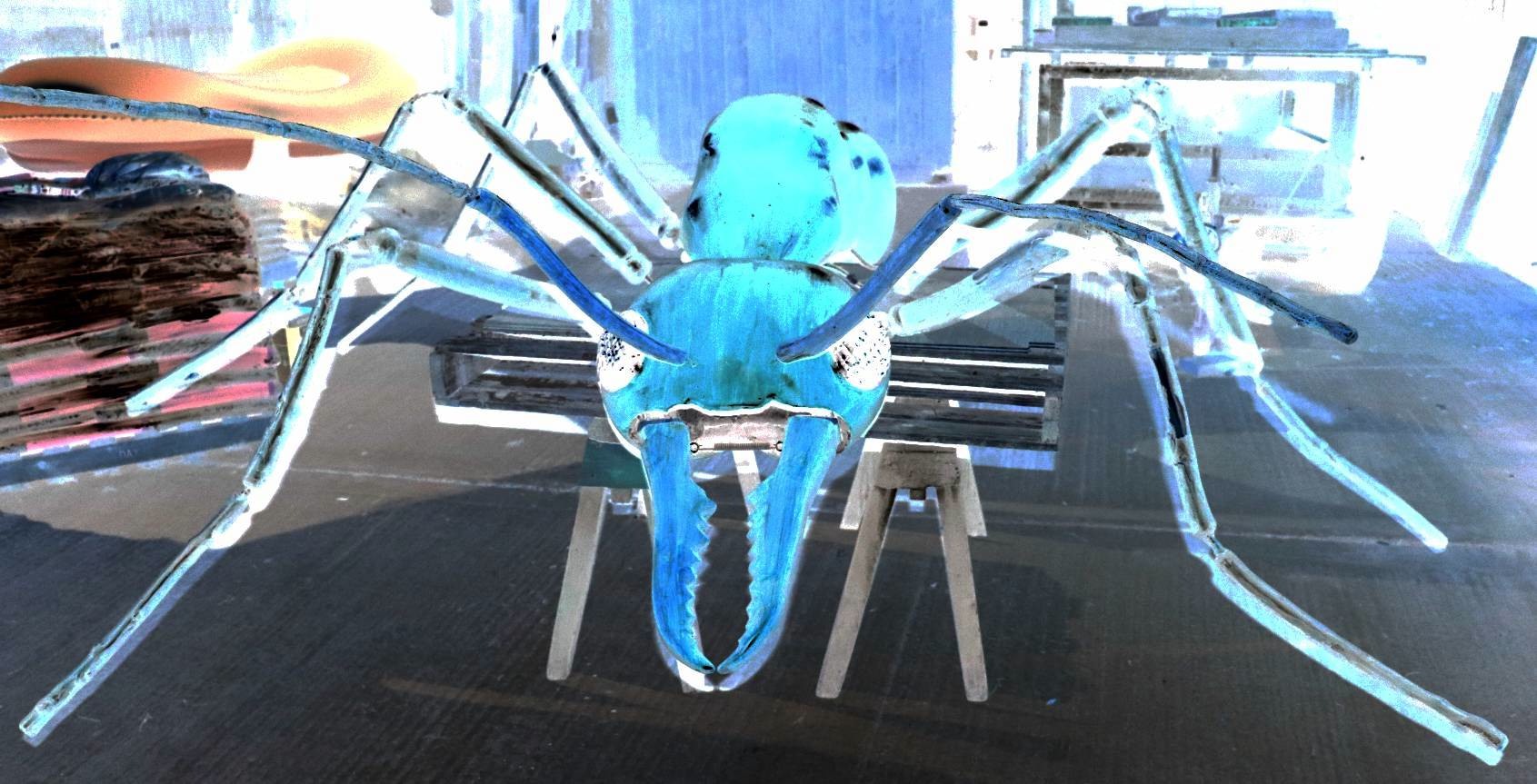
POLITICS - EMBLEM OF THE ANTARCTIC TREATY SINCE 2002
Antarctica has no government, although various countries claim sovereignty in certain regions. While a few of these countries have mutually recognised each other's claims, the validity of these claims is generally not recognised universally.
New claims on Antarctica have been suspended since 1959 and the continent is considered politically neutral. Its status is regulated by the 1959 Antarctic Treaty and other related agreements, collectively called the Antarctic Treaty System. Antarctica is defined as all land and ice shelves south of 60° S for the purposes of the Treaty System. The treaty was signed by twelve countries including the Soviet Union (and later Russia), the United Kingdom, Argentina, Chile, Australia, and the United States. It set aside Antarctica as a scientific preserve, established freedom of scientific investigation and environmental protection, and banned military activity on the continent. This was the first arms control agreement established during the Cold War.
In 1983, the Antarctic Treaty Parties began negotiations on a convention to regulate mining in Antarctica. A coalition of international organisations launched a public pressure campaign to prevent any minerals development in the region, led largely by Greenpeace International which established its own scientific station–World Park Base–in the Ross Sea region and conducted annual expeditions to document environmental effects of humans on the continent. In 1988, the Convention on the Regulation of Antarctic Mineral Resources (CRAMRA) was adopted. The following year, however, Australia and France announced that they would not ratify the convention, rendering it dead for all intents and purposes. They proposed instead that a comprehensive regime to protect the Antarctic environment be negotiated in its place. The Protocol on Environmental Protection to the Antarctic Treaty (the ‘Madrid Protocol’) was negotiated as other countries followed suit and on 14 January 1998 it entered into force. The Madrid Protocol bans all mining in Antarctica, designating the continent as a ‘natural reserve devoted to peace and science’.
HMS ENDURANCE: ROYAL NAVY'S ANTARCTIC PATROL SHIP
The Antarctic Treaty prohibits any military activity in Antarctica, including the establishment of military bases and fortifications, military manoeuvers, and weapons testing. Military personnel or equipment are permitted only for scientific research or other peaceful purposes. The only documented military land manoeuvre was Operation NINETY by the Argentine military.
The United States military issues the Antarctica Service Medal to military members or civilians who perform research duty in Antarctica. The medal includes a "wintered over" bar issued to those who remain on the continent for 2 six-month seasons.
ECONOMY OF ANTARCTICA
The illegal capture and sale of the Patagonian toothfish has led to several arrests. Pictured here is the Antarctic toothfish, a sister species.
Although coal, hydrocarbons, iron ore, platinum, copper, chromium, nickel, gold and other minerals have been found, they have not been in large enough quantities to exploit. The 1991 Protocol on Environmental Protection to the Antarctic Treaty also restricts a struggle for resources. In 1998, a compromise agreement was reached to place an indefinite ban on mining, to be reviewed in 2048, further limiting economic development and exploitation. The primary economic activity is the capture and offshore trading of fish. Antarctic fisheries in 2000–01 reported landing 112,934 tonnes.
Small-scale "expedition tourism" has existed since 1957 and is currently subject to Antarctic Treaty and Environmental Protocol provisions, but in effect self-regulated by the International Association of Antarctica Tour Operators (IAATO). Not all vessels associated with Antarctic tourism are members of IAATO, but IAATO members account for 95% of the tourist activity. Travel is largely by small or medium ship, focusing on specific scenic locations with accessible concentrations of iconic wildlife. A total of 37,506 tourists visited during the 2006–07 Austral summer with nearly all of them coming from commercial ships. The number is predicted to increase to over 80,000 by 2010.
There has been some concern over the potential adverse environmental and ecosystem effects caused by the influx of visitors. A call for stricter regulations for ships and a tourism quota has been made by some environmentalists and scientists. The primary response by Antarctic Treaty Parties has been to develop, through their Committee for Environmental Protection and in partnership with IAATO, "site use guidelines" setting landing limits and closed or restricted zones on the more frequently visited sites. Antarctic sight seeing flights (which did not land) operated out of Australia and New Zealand until the fatal crash of Air New Zealand Flight 901 in 1979 on Mount Erebus, which killed all 257 aboard. Qantas resumed commercial overflights to Antarctica from Australia in the mid-1990s.
RESEARCH
A full moon and 25-second exposure allowed sufficient light for this photo to be taken at Amundsen-Scott South Pole Station during the long Antarctic night. The station can be seen at far left, the power plant in the center and the mechanic's garage in the lower right. The green light in the background is the Aurora Australis.
Each year, scientists from 28 different nations conduct experiments not reproducible in any other place in the world. In the summer more than 4,000 scientists operate research stations; this number decreases to just over 1,000 in the winter. McMurdo Station, which is the largest research station in Antarctica, is capable of housing more than 1,000 scientists, visitors, and tourists.
Researchers include biologists, geologists, oceanographers, physicists, astronomers, glaciologists, and meteorologists. Geologists tend to study plate tectonics, meteorites from outer space, and resources from the breakup of the supercontinent Gondwana. Glaciologists in Antarctica are concerned with the study of the history and dynamics of floating ice, seasonal snow, glaciers, and ice sheets. Biologists, in addition to examining the wildlife, are interested in how harsh temperatures and the presence of people affect adaptation and survival strategies in a wide variety of organisms. Medical physicians have made discoveries concerning the spreading of viruses and the body's response to extreme seasonal temperatures. Astrophysicists at Amundsen-Scott South Pole Station study the celestial dome and cosmic microwave background radiation. Many astronomical observations are better made from the interior of Antarctica than from most surface locations because of the high elevation, which results in a thin atmosphere, low temperature, which minimizes the amount of water vapour in the atmosphere, and absence of light pollution, thus allowing for a view of space clearer than anywhere else on Earth. Antarctic ice serves as both the shield and the detection medium for the largest neutrino telescope in the world, built 2 km (1.2 mi) below Amundsen-Scott station.
Since the 1970s, an important focus of study has been the ozone layer in the atmosphere above Antarctica. In 1985, three British Scientists working on data they had gathered at Halley Station on the Brunt Ice Shelf discovered the existence of a hole in this layer. It was eventually determined that the destruction of the ozone was caused by chlorofluorocarbons emitted by human products. With the ban of CFCs in the Montreal Protocol of 1989, it is believed that the ozone hole will close up by around 2065. In September 2006, NASA satellite data showed that the Antarctic ozone hole was the largest on record, covering 27.5 million km2 (10.6 million sq mi).
On 6 September 2007, Belgian-based International Polar Foundation unveiled the Princess Elisabeth station, the world's first zero-emissions polar science station in Antarctica to research climate change. Costing $16.3 million, the prefabricated station, which is part of International Polar Year, was shipped to the South Pole from Belgium by the end of 2008 to monitor the health of the polar regions. Belgian polar explorer Alain Hubert stated: "This base will be the first of its kind to produce zero emissions, making it a unique model of how energy should be used in the Antarctic." Johan Berte is the leader of the station design team and manager of the project which conducts research in climatology, glaciology and microbiology.
In January 2008, the British Antarctic Survey (BAS) scientists, led by Hugh Corr and David Vaughan, reported (in the journal Nature Geoscience) that 2,200 years ago, a volcano erupted under Antarctica's ice sheet (based on airborne survey with radar images). The biggest eruption in Antarctica in the last 10,000 years, the volcanic ash was found deposited on the ice surface under the Hudson Mountains, close to Pine Island Glacier.
METEORITES
Meteorites from Antarctica are an important area of study of material formed early in the solar system; most are thought to come from asteroids, but some may have originated on larger planets. The first meteorites were found in 1912. In 1969, a Japanese expedition discovered nine meteorites. Most of these meteorites have fallen onto the ice sheet in the last million years. Motion of the ice sheet tends to concentrate the meteorites at blocking locations such as mountain ranges, with wind erosion bringing them to the surface after centuries beneath accumulated snowfall. Compared with meteorites collected in more temperate regions on Earth, the Antarctic meteorites are well-preserved.
This large collection of meteorites allows a better understanding of the abundance of meteorite types in the solar system and how meteorites relate to asteroids and comets. New types of meteorites and rare meteorites have been found. Among these are pieces blasted off the Moon, and probably Mars, by impacts. These specimens, particularly ALH84001 discovered by ANSMET, are at the center of the controversy about possible evidence of microbial life on Mars. Because meteorites in space absorb and record cosmic radiation, the time elapsed since the meteorite hit the Earth can be determined from laboratory studies. The elapsed time since fall, or terrestrial residence age, of a meteorite represents more information that might be useful in environmental studies of Antarctic ice sheets.
In 2006, a team of researchers from Ohio State University used gravity measurements by NASA's GRACE satellites to discover the 300-mile (480 km)-wide Wilkes Land crater, which probably formed about 250 million years ago.
ICE MASS & GLOBAL SEA LEVEL
Due to its location at the South Pole, Antarctica receives relatively little solar radiation. This means that it is a very cold continent where water is mostly in the form of ice. Precipitation is low (most of Antarctica is a desert) and almost always in the form of snow, which accumulates and forms a giant ice sheet which covers the land. Parts of this ice sheet form moving glaciers known as ice streams, which flow towards the edges of the continent. Next to the continental shore are many ice shelves. These are floating extensions of outflowing glaciers from the continental ice mass. Offshore, temperatures are also low enough that ice is formed from seawater through most of the year. It is important to understand the various types of Antarctic ice to understand possible effects on sea levels and the implications of global warming.
Sea ice extent expands annually in the Antarctic winter and most of this ice melts in the summer. This ice is formed from the ocean water and floats in the same water and thus does not contribute to rise in sea level. The extent of sea ice around Antarctica has remained roughly constant in recent decades, although the thickness changes are unclear.
Melting of floating ice shelves (ice that originated on the land) does not in itself contribute much to sea-level rise (since the ice displaces only its own mass of water). However it is the outflow of the ice from the land to form the ice shelf which causes a rise in global sea level. This effect is offset by snow falling back onto the continent. Recent decades have witnessed several dramatic collapses of large ice shelves around the coast of Antarctica, especially along the Antarctic Peninsula. Concerns have been raised that disruption of ice shelves may result in increased glacial outflow from the continental ice mass.
On the continent itself, the large volume of ice present stores around 70% of the world's fresh water. This ice sheet is constantly gaining ice from snowfall and losing ice through outflow to the sea. West Antarctica is currently experiencing a net outflow of glacial ice, which will increase global sea level over time. A review of the scientific studies looking at data from 1992 to 2006 suggested that a net loss of around 50 gigatonnes of ice per year was a reasonable estimate (around 0.14 mm of sea level rise). Significant acceleration of outflow glaciers in the Amundsen Sea Embayment may have more than doubled this figure for 2006.
East Antarctica is a cold region with a ground base above sea level and occupies most of the continent. This area is dominated by small accumulations of snowfall which becomes ice and thus eventually seaward glacial flows. The mass balance of the East Antarctic Ice Sheet as a whole is thought to be slightly positive (lowering sea level) or near to balance. However, increased ice outflow has been suggested in some regions.
EFFECTS OF GLOBAL WARMING - TREND 1957–2006
Some of Antarctica has been warming up; particularly strong warming has been noted on the Antarctic Peninsula. A study by Eric Steig published in 2009 noted for the first time that the continent-wide average surface temperature trend of Antarctica is slightly positive at >0.05 °C (0.09 °F) per decade from 1957 to 2006. This study also noted that West Antarctica has warmed by more than 0.1 °C (0.2 °F) per decade in the last 50 years, and this warming is strongest in winter and spring. This is partly offset by fall cooling in East Antarctica. There is evidence from one study that
Antarctica is warming as a result of human carbon dioxide emissions. However, the small amount of surface warming in West Antarctica is not believed to be directly affecting the West Antarctic Ice Sheet's contribution to sea level. Instead the recent increases in glacier outflow are believed to be due to an inflow of warm water from the deep ocean, just off the continental shelf. The net contribution to sea level from the Antarctic Peninsula is more likely to be a direct result of the much greater atmospheric warming there.
In 2002 the Antarctic Peninsula's Larsen-B ice shelf collapsed. Between 28 February and 8 March 2008, about 570 square kilometres (220 sq mi) of ice from the Wilkins Ice Shelf on the southwest part of the peninsula collapsed, putting the remaining 15,000 km2 (5,800 sq mi) of the ice shelf at risk. The ice was being held back by a "thread" of ice about 6 km (4 mi) wide, prior to its collapse on 5 April 2009. According to NASA, the most widespread Antarctic surface melting of the past 30 years occurred in 2005, when an area of ice comparable in size to California briefly melted and refroze; this may have resulted from temperatures rising to as high as 5 °C (41 °F).
OZONE DEPLETION
Each year a large area of low ozone concentration or "ozone hole" grows over Antarctica. This hole covers almost the whole continent and was at its largest in September 2008, when the longest lasting hole on record remained until the end of December. The hole was detected by scientists in 1985 and has tended to increase over the years of observation. The ozone hole is attributed to the emission of chlorofluorocarbons or CFCs into the atmosphere, which decompose the ozone into other gases.
Some scientific studies suggest that ozone depletion may have a dominant role in governing climatic change in Antarctica (and a wider area of the Southern Hemisphere). Ozone absorbs large amounts of ultraviolet radiation in the stratosphere. Ozone depletion over Antarctica can cause a cooling of around 6 °C in the local stratosphere. This cooling has the effect of intensifying the westerly winds which flow around the continent (the polar vortex) and thus prevents outflow of the cold air near the South Pole. As a result, the continental mass of the East Antarctic ice sheet is held at lower temperatures, and the peripheral areas of Antarctica, especially the Antarctic Peninsula, are subject to higher temperatures, which promote accelerated melting. Models also suggest that the ozone depletion/enhanced polar vortex effect also accounts for the recent increase in sea-ice just offshore of the continent.
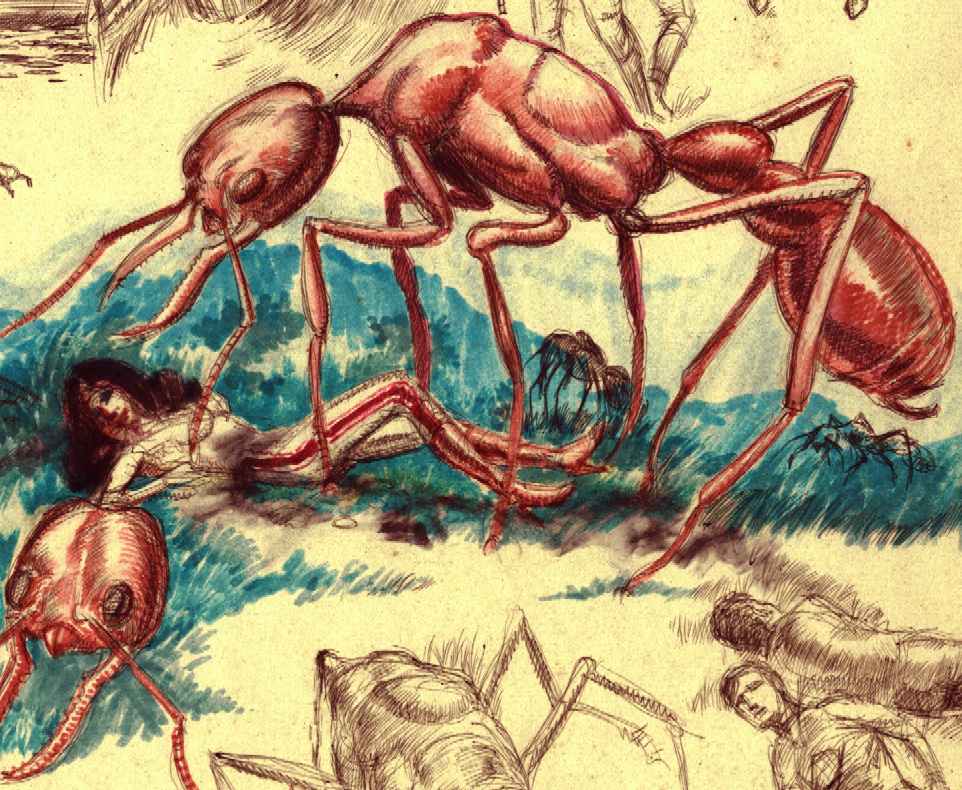
A
nightmare situation, if the Sectasaurs multiplied to threaten other
species on earth

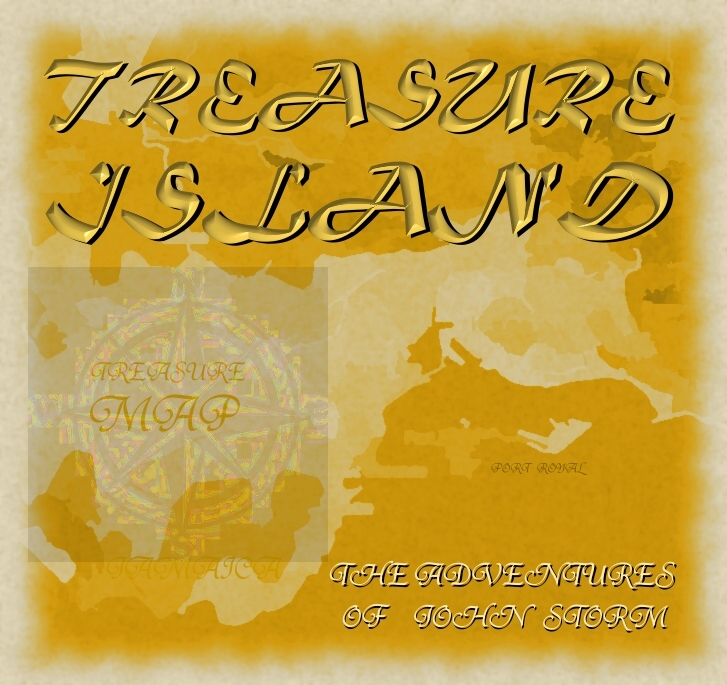
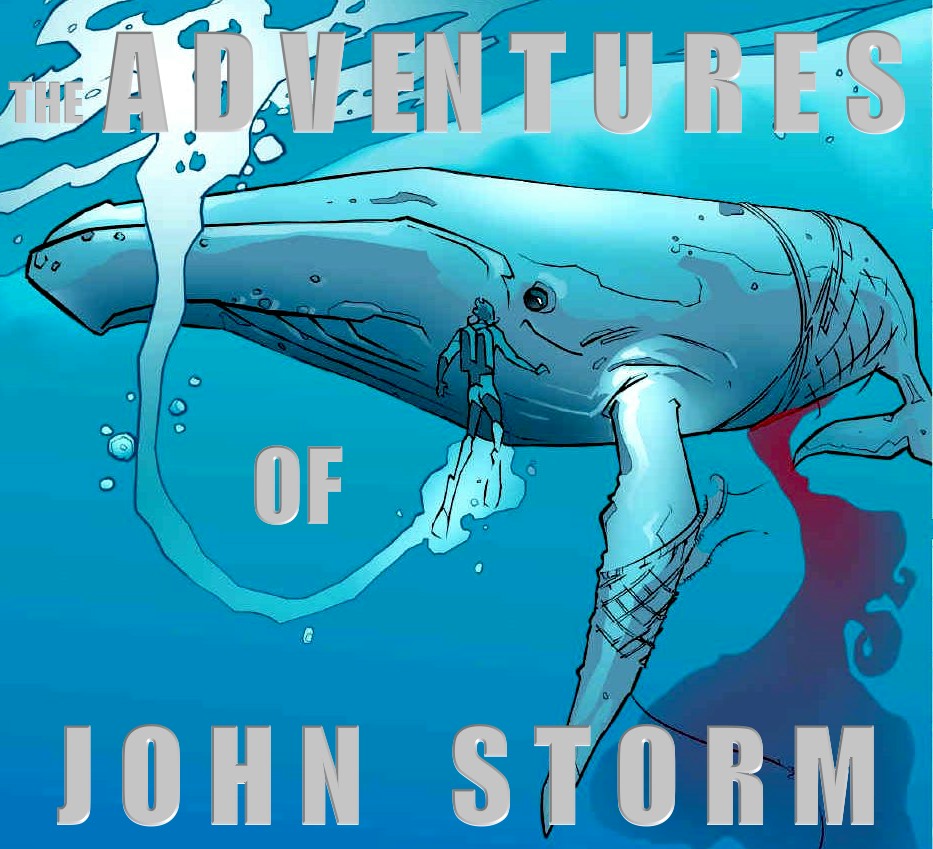
https://en.wikipedia.org/wiki/Titanomyrma
https://interestingengineering.com/science/giant-ant-fossil-life-50-million
https://www.livescience.com/14008-giant-ant-fossil.html
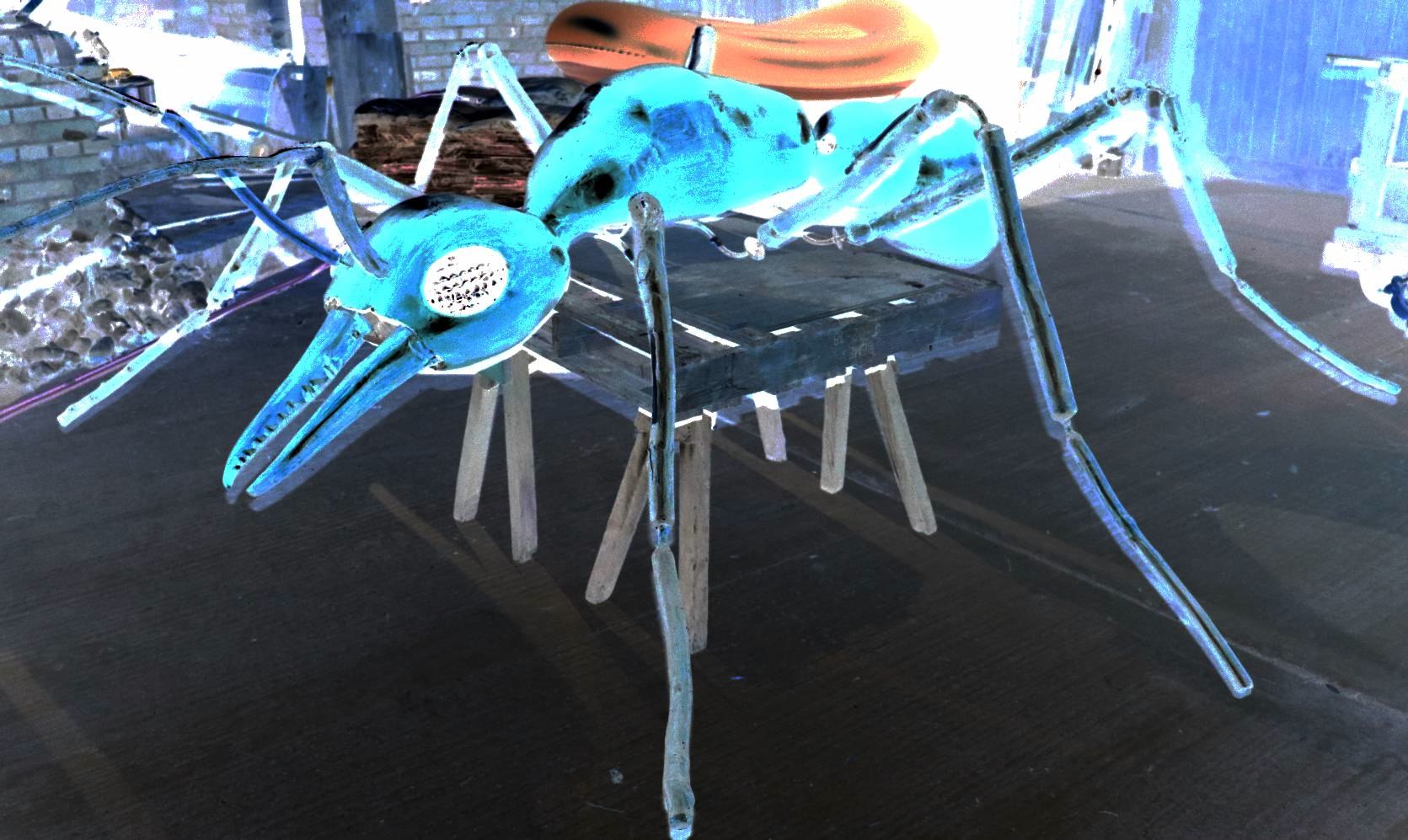
ARTWORK
- Somewhat better than the huge ants in "Them," but perhaps not as good as
the CGI in Antman. Now a museum
exhibit in Sussex, the artwork is based on an Australian Bulldog
ant.
|




















